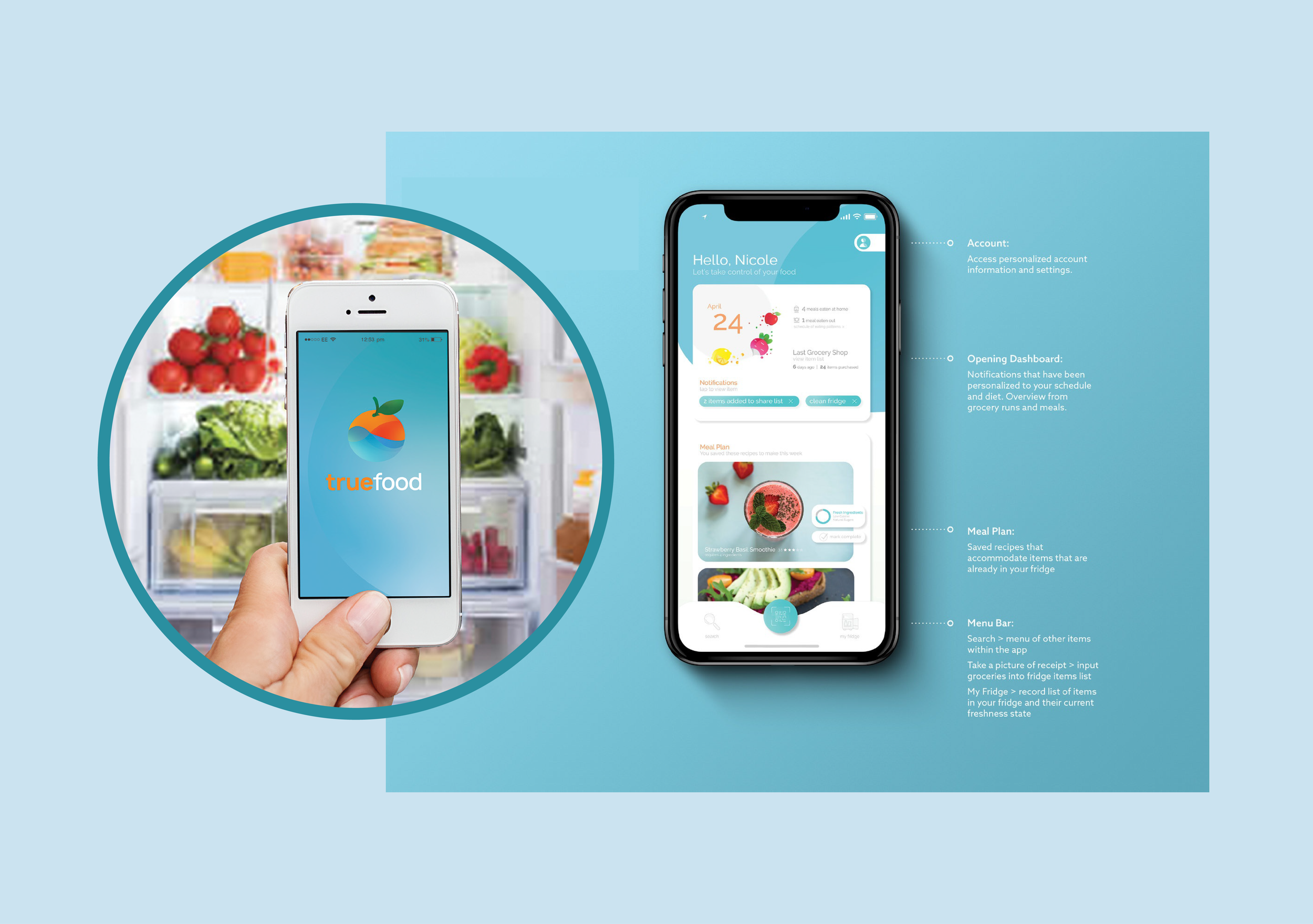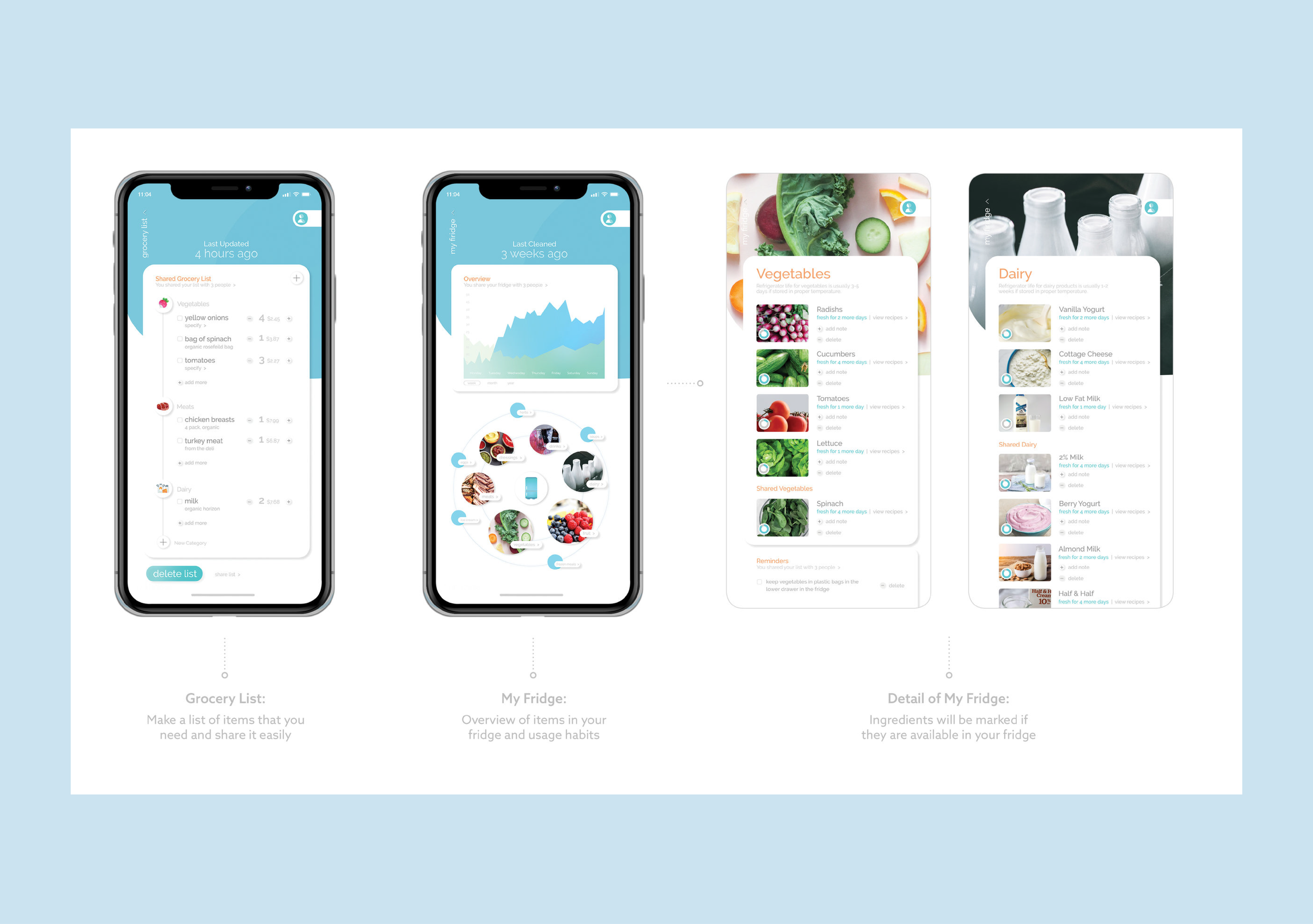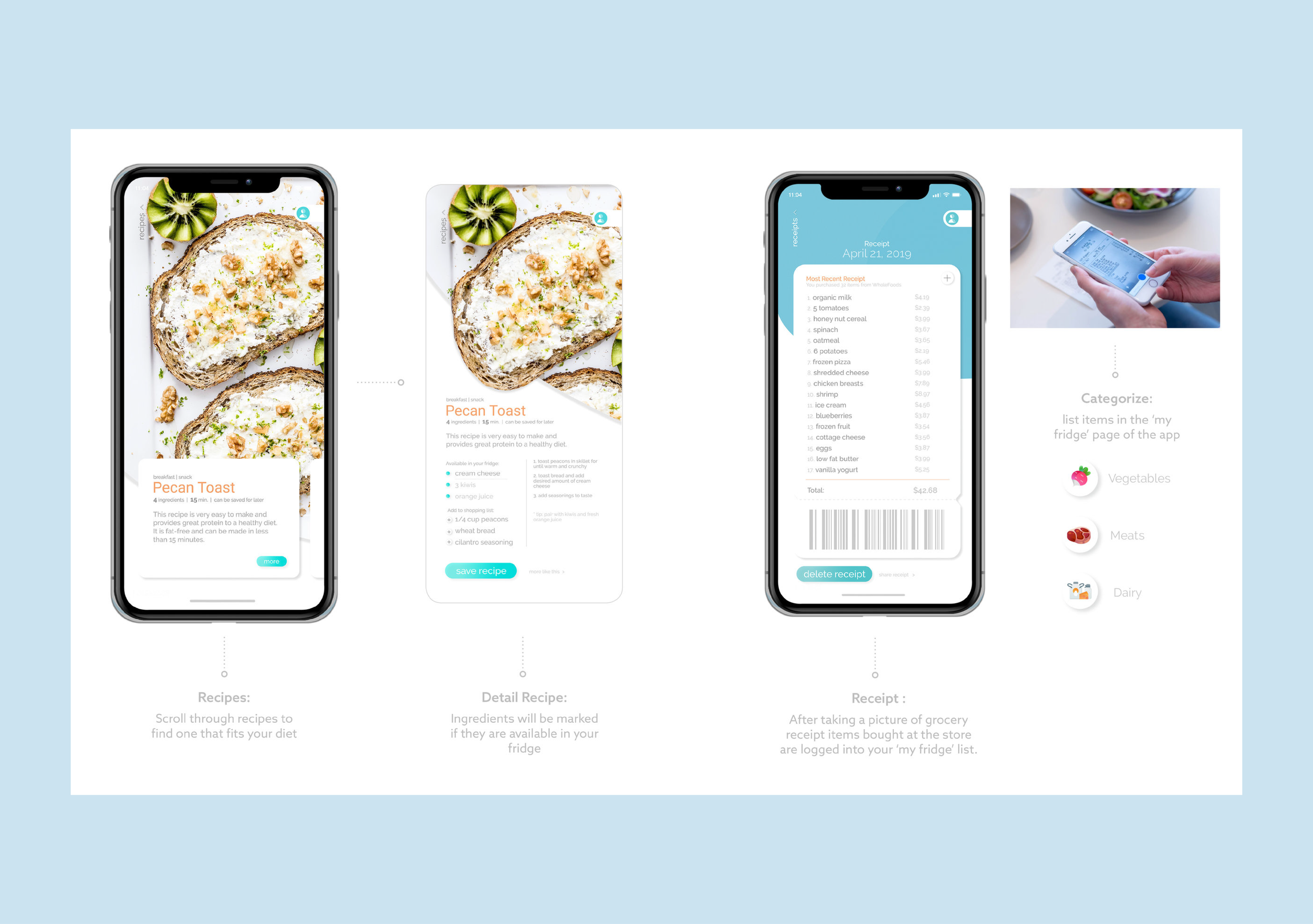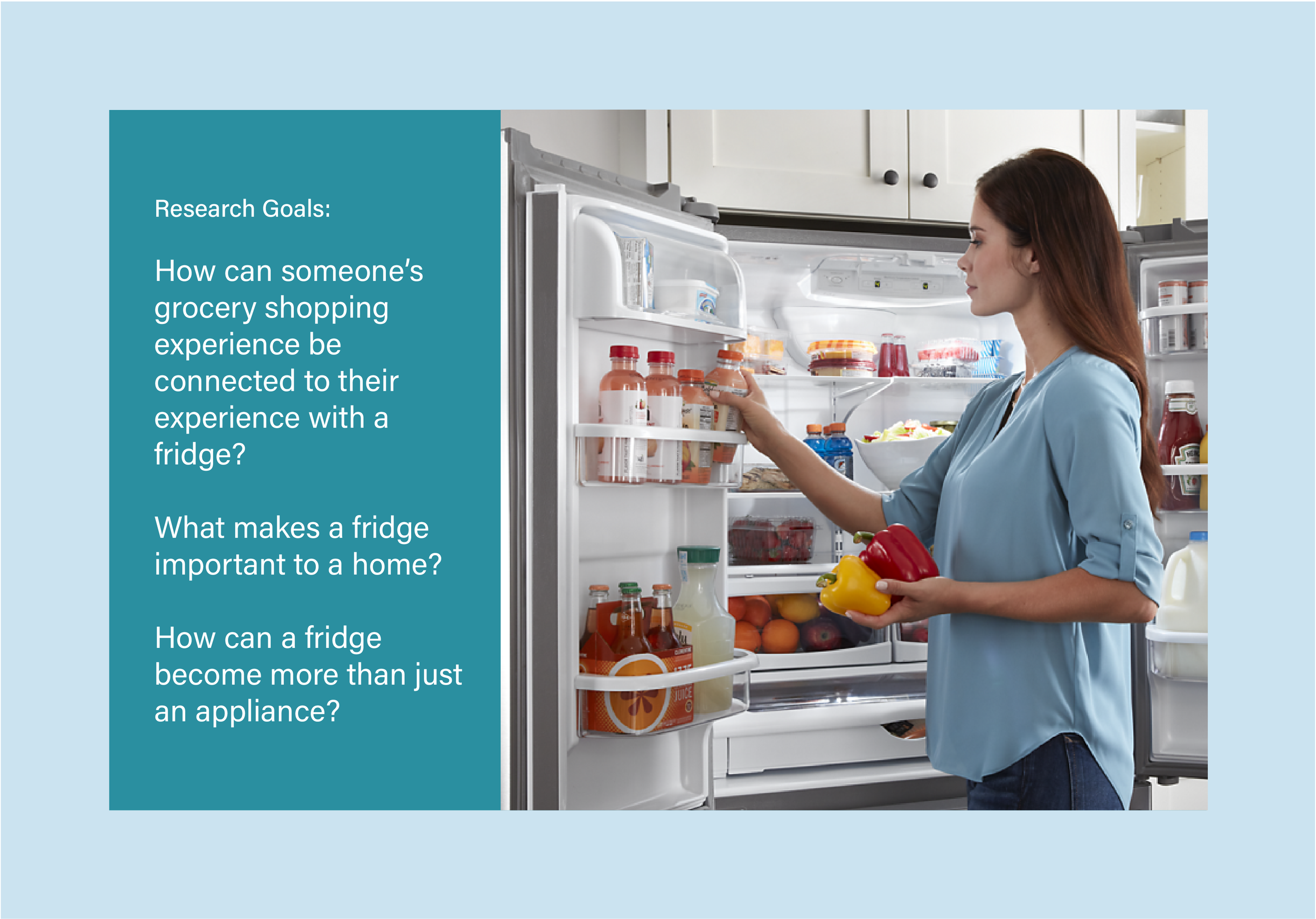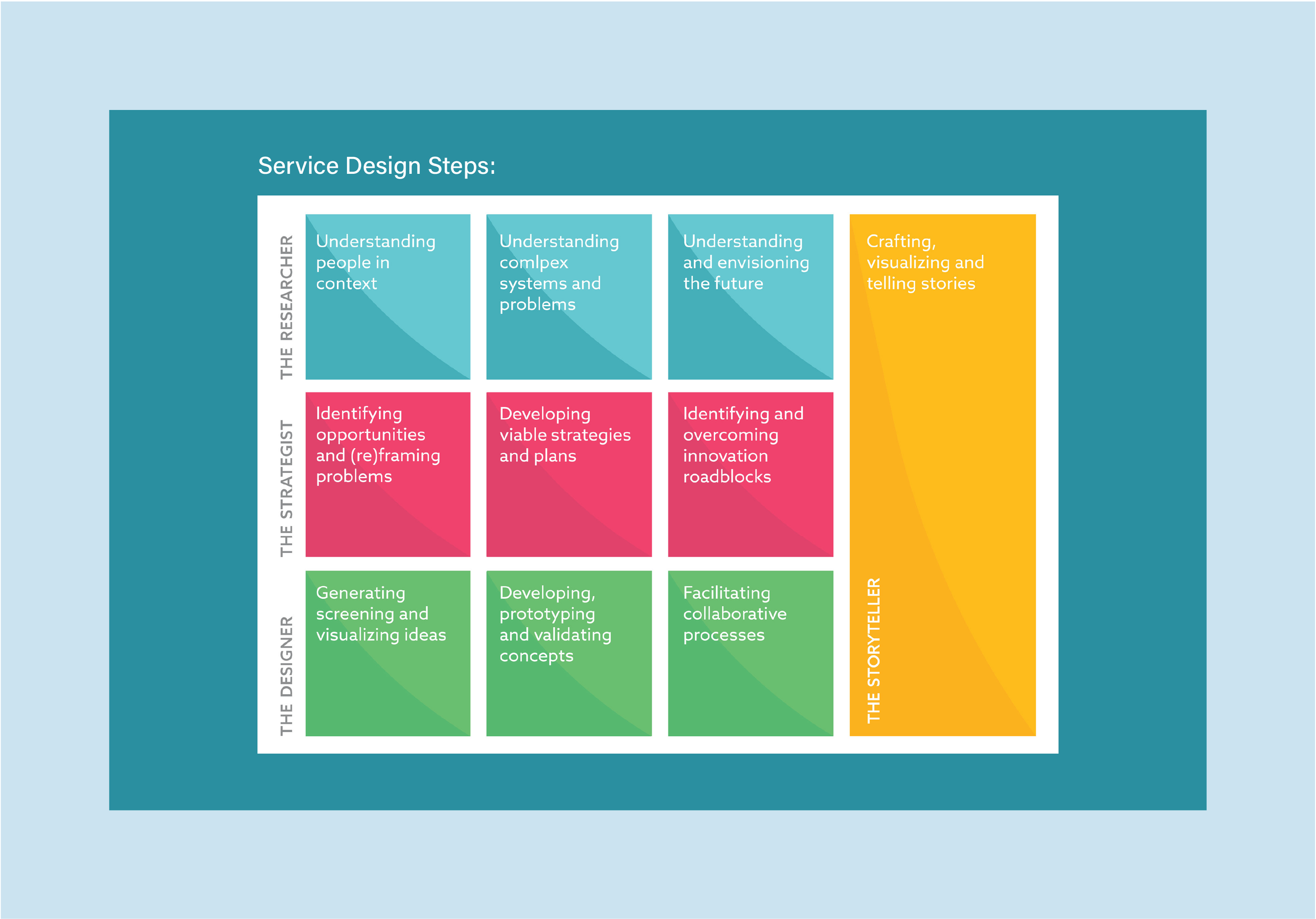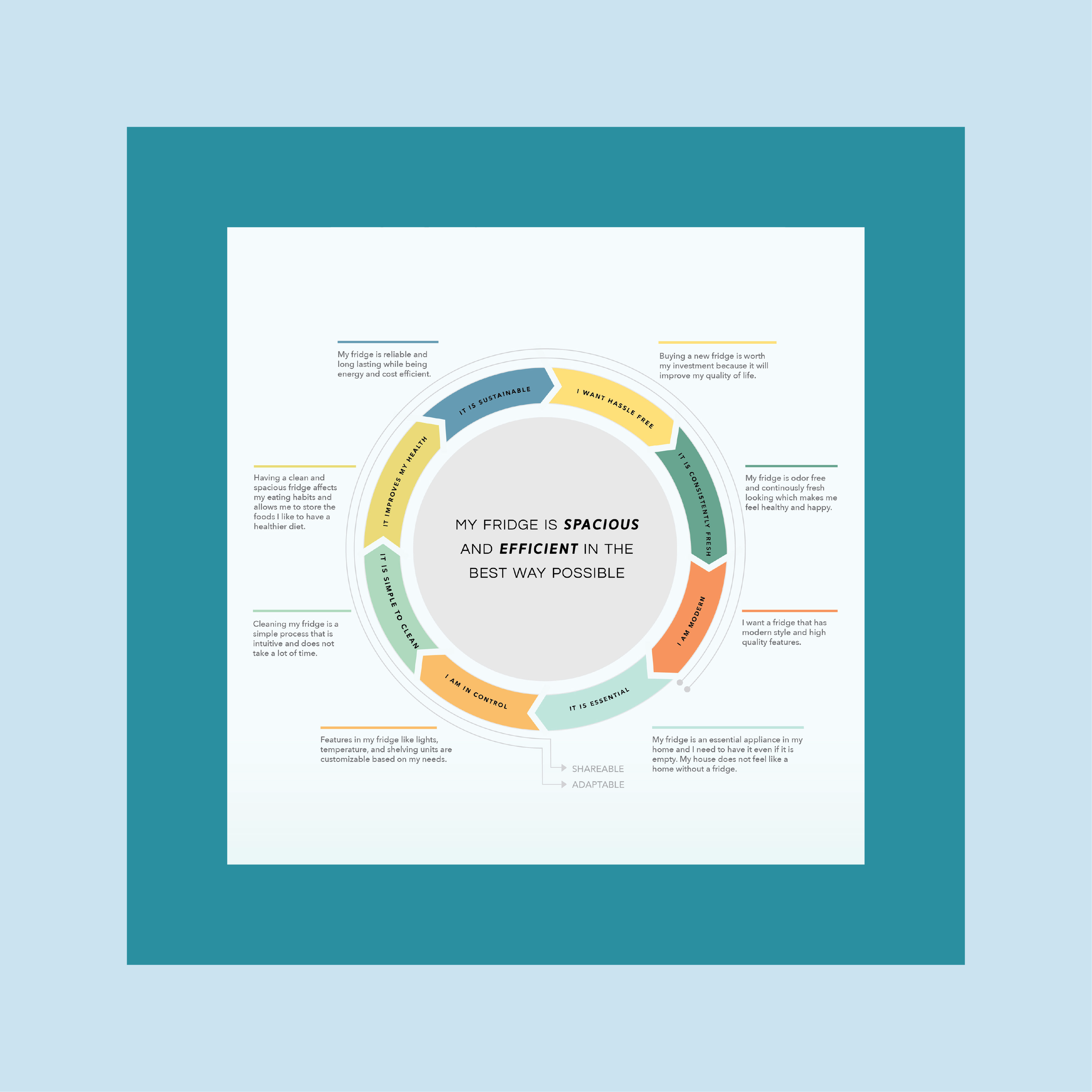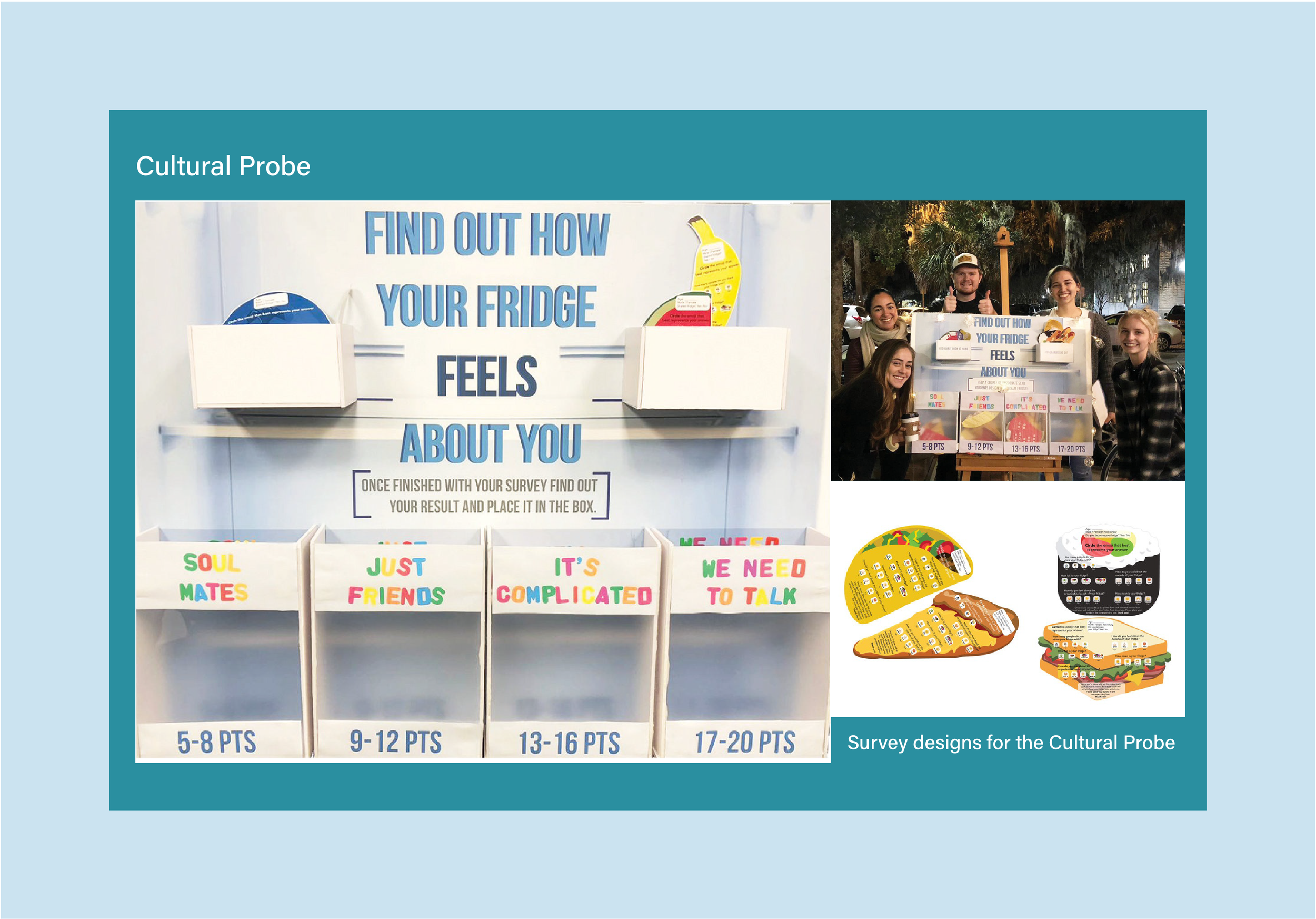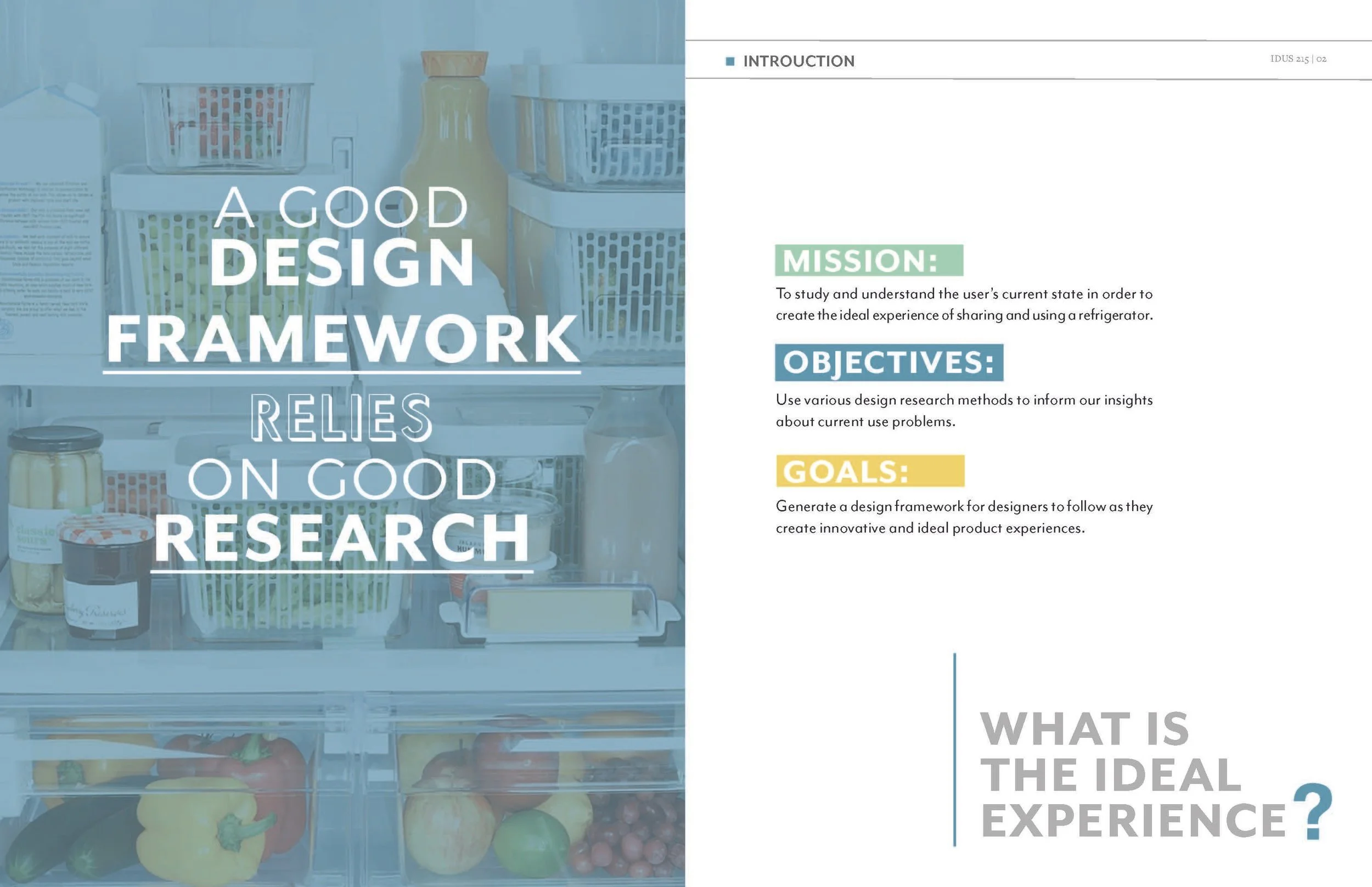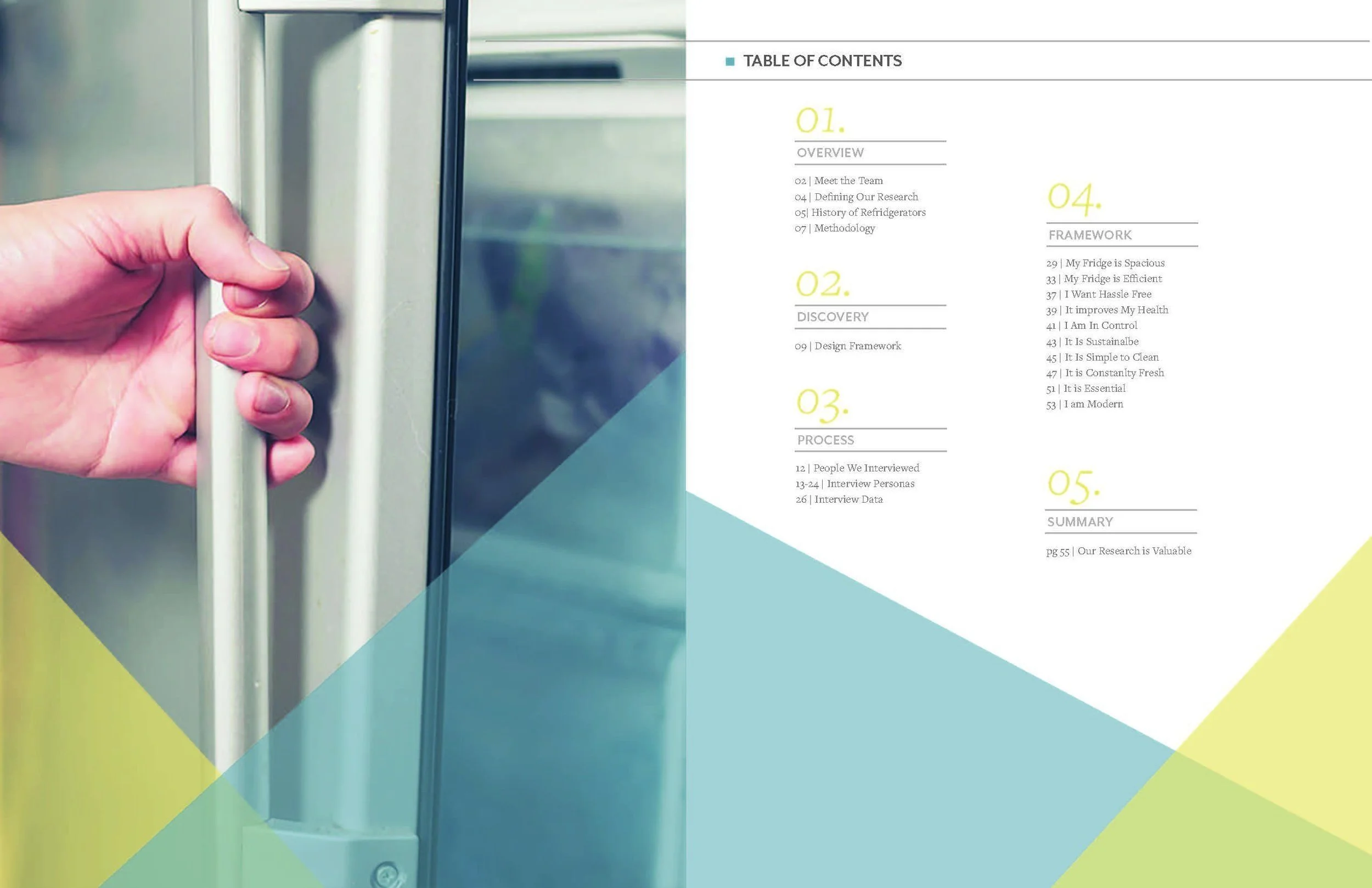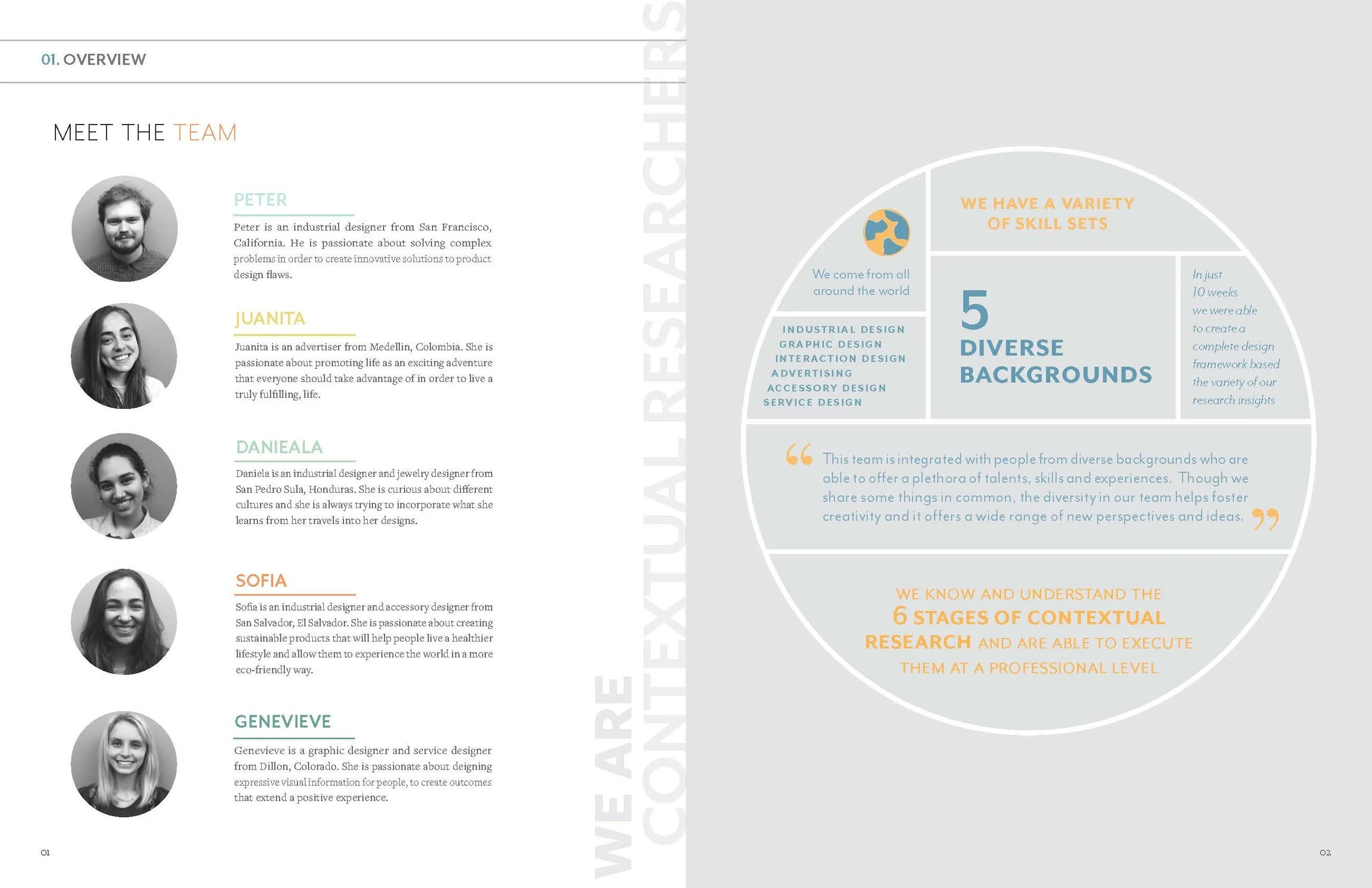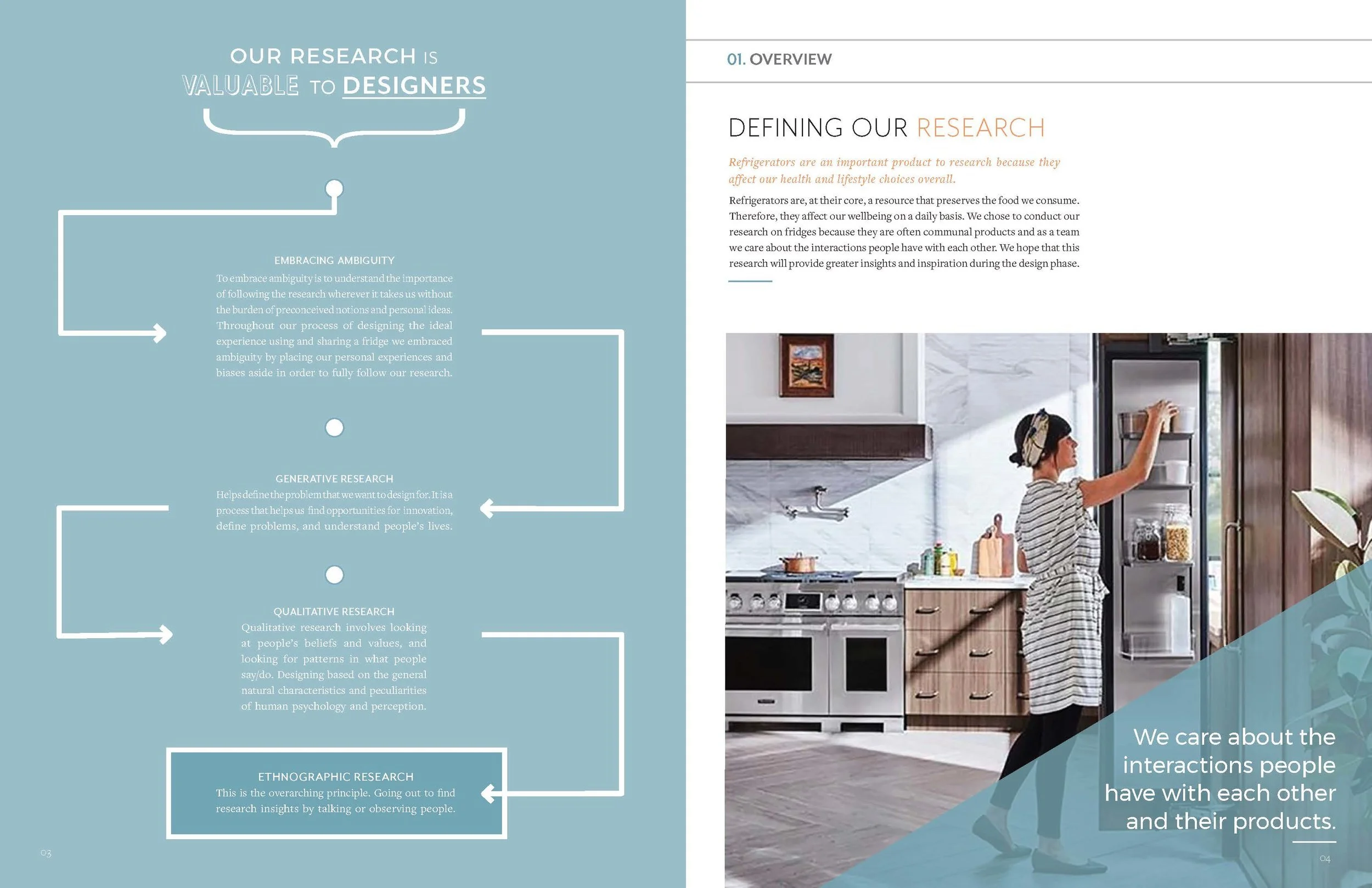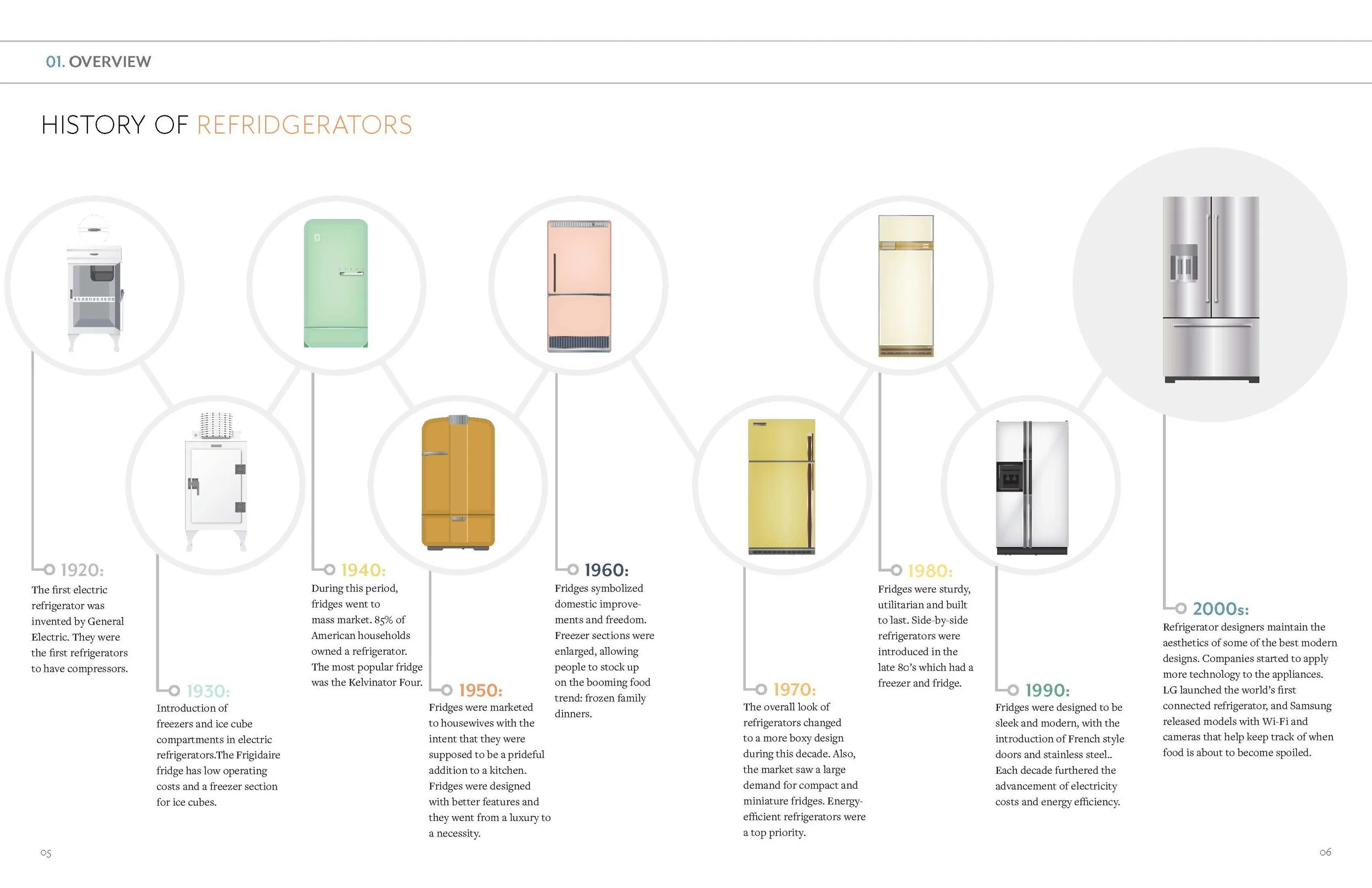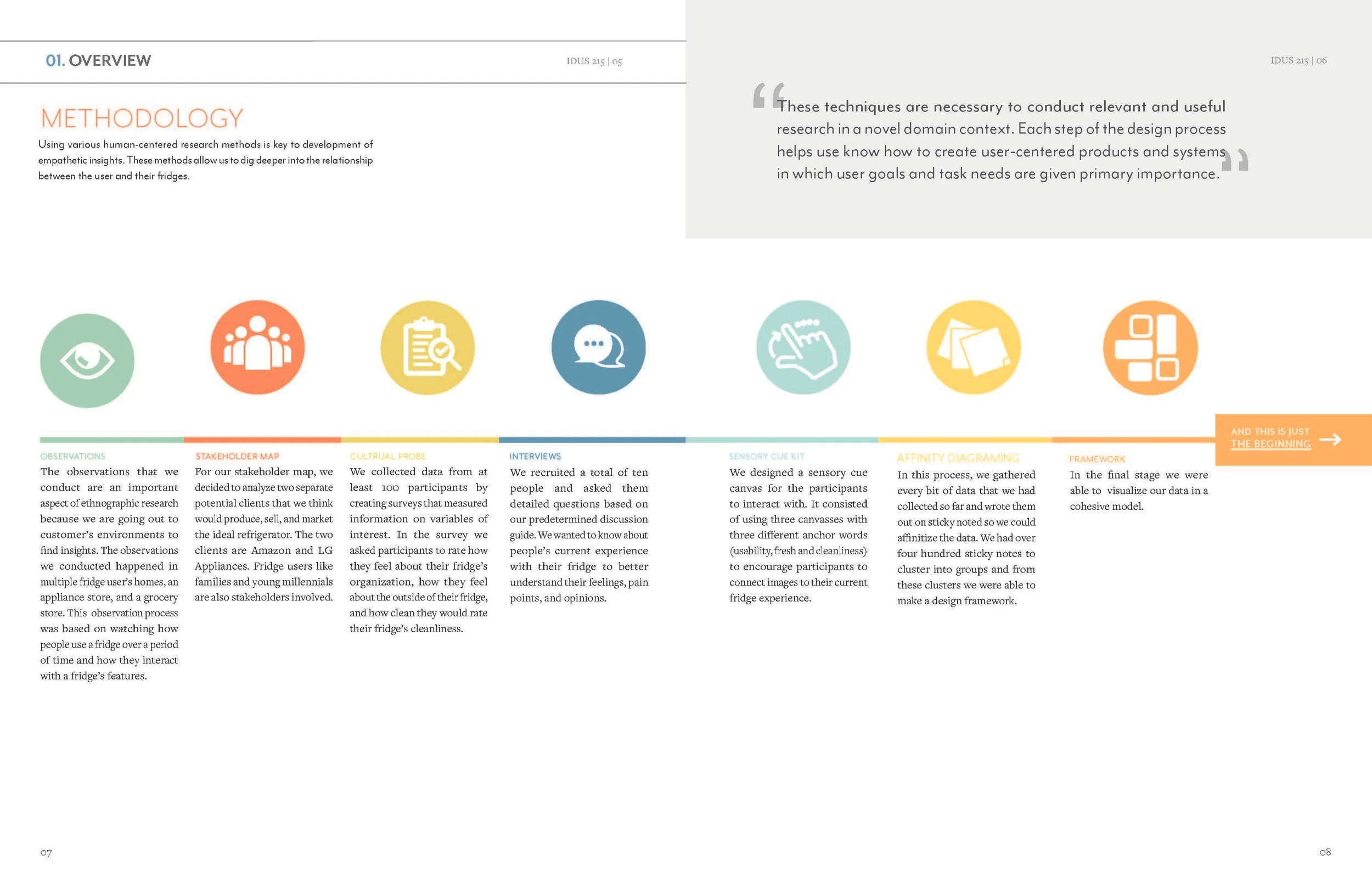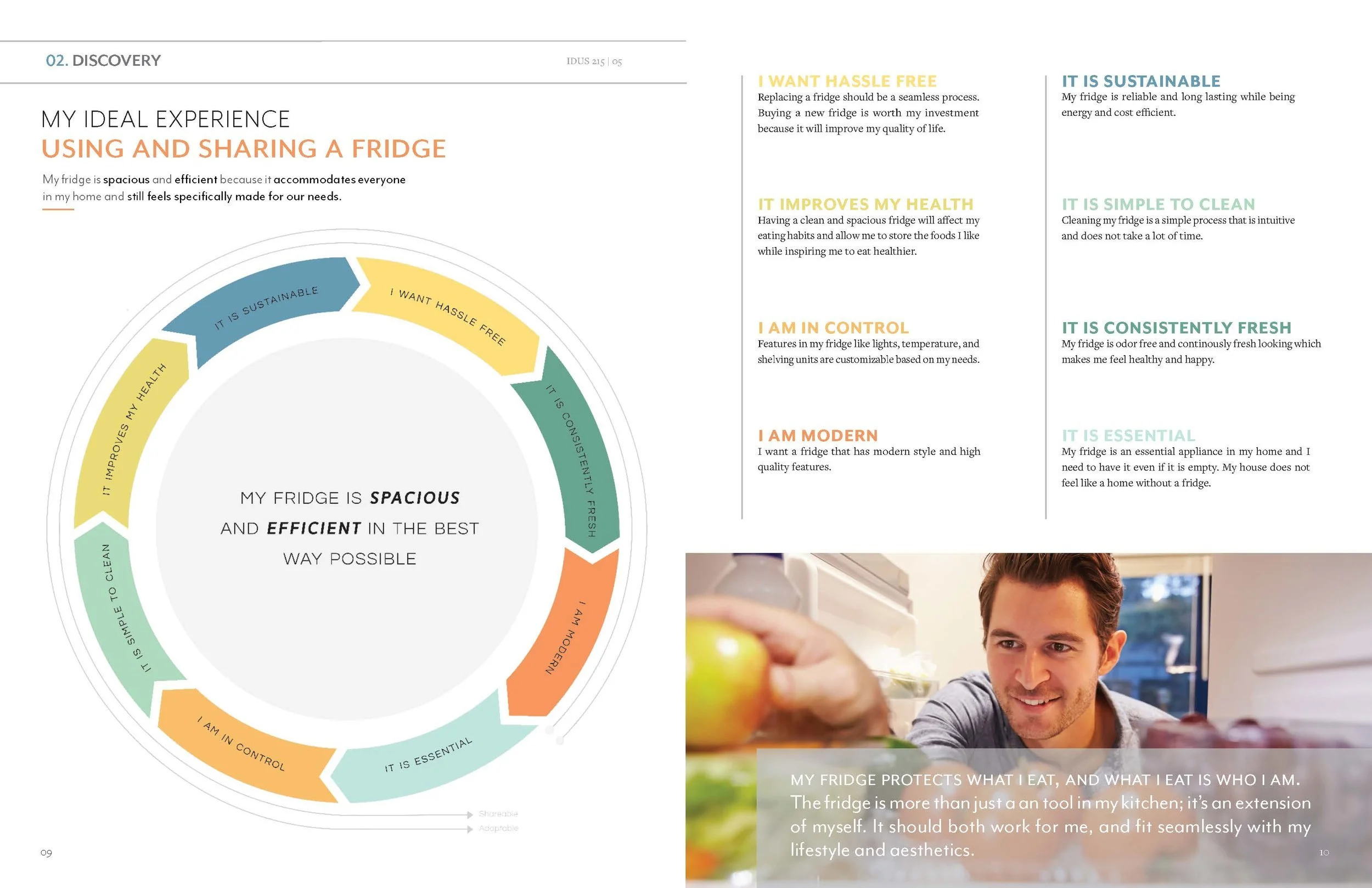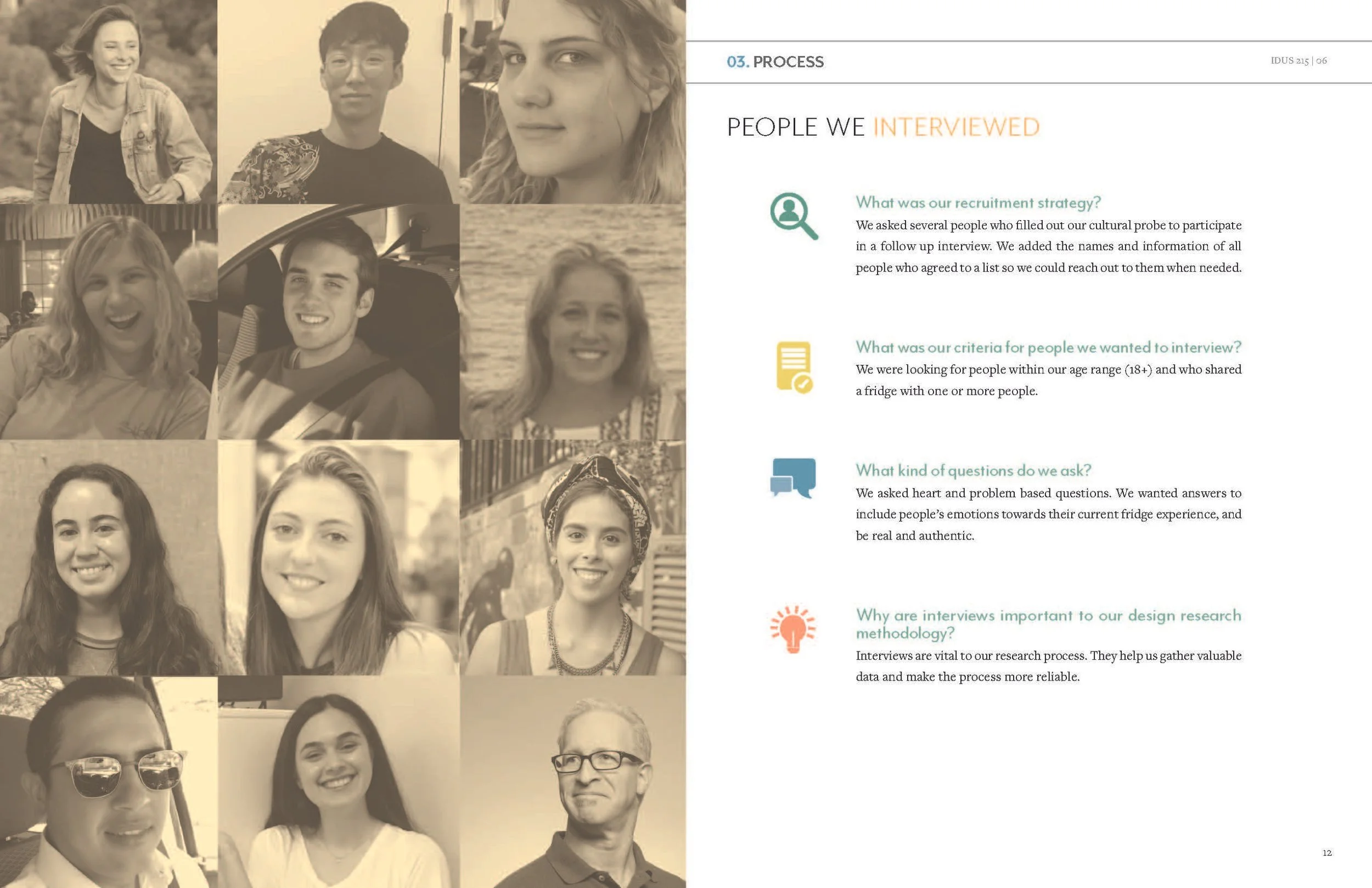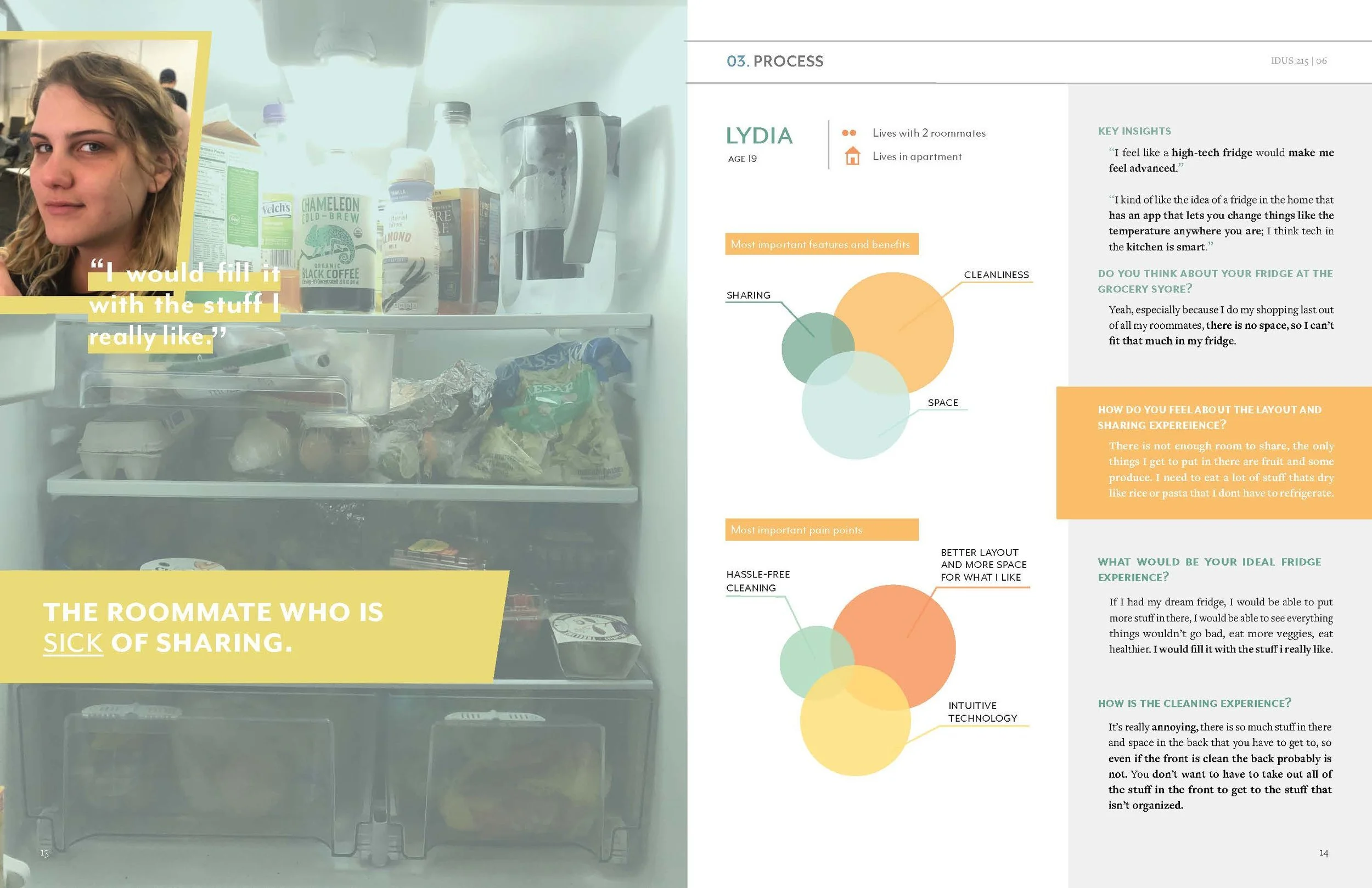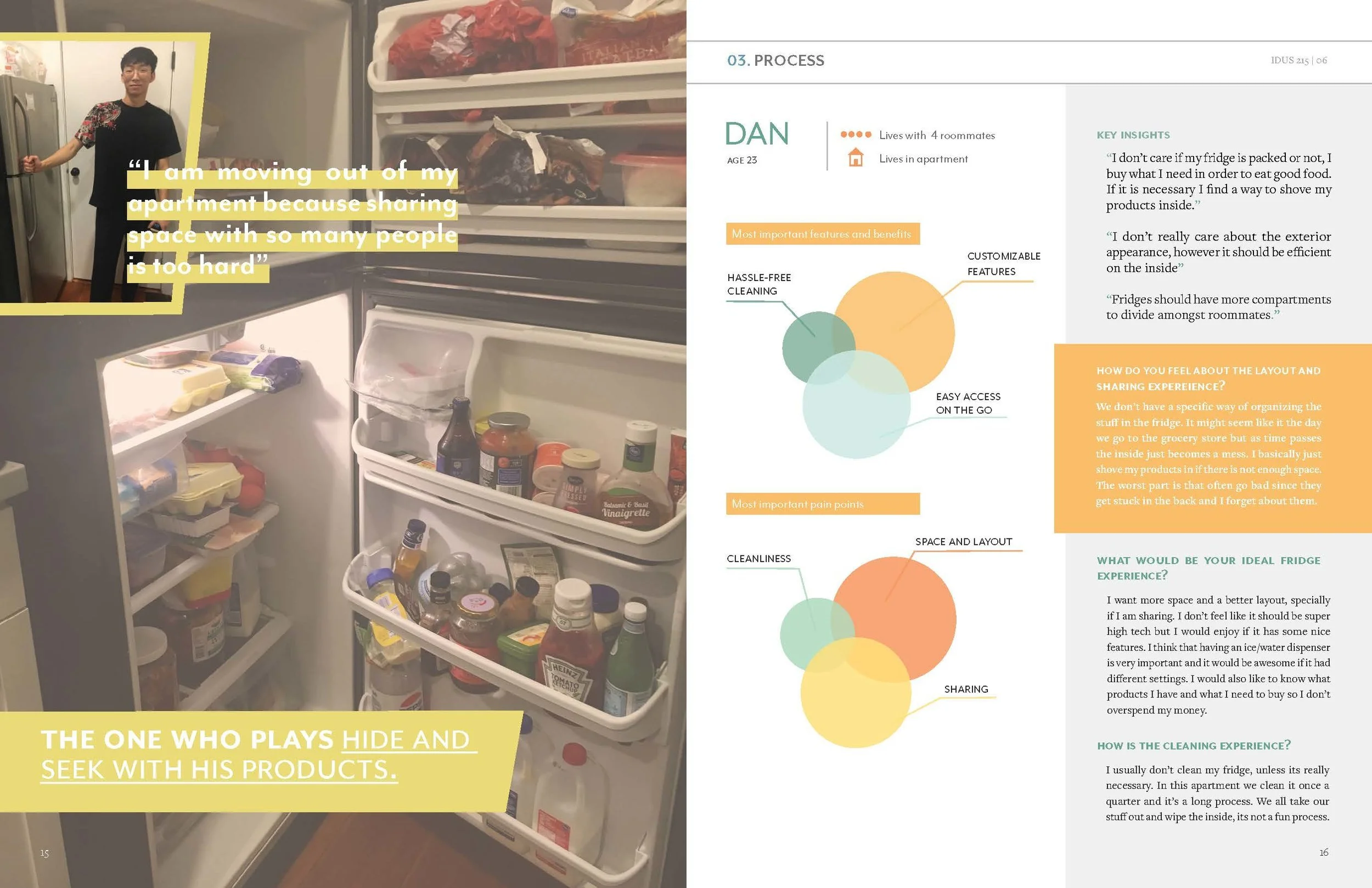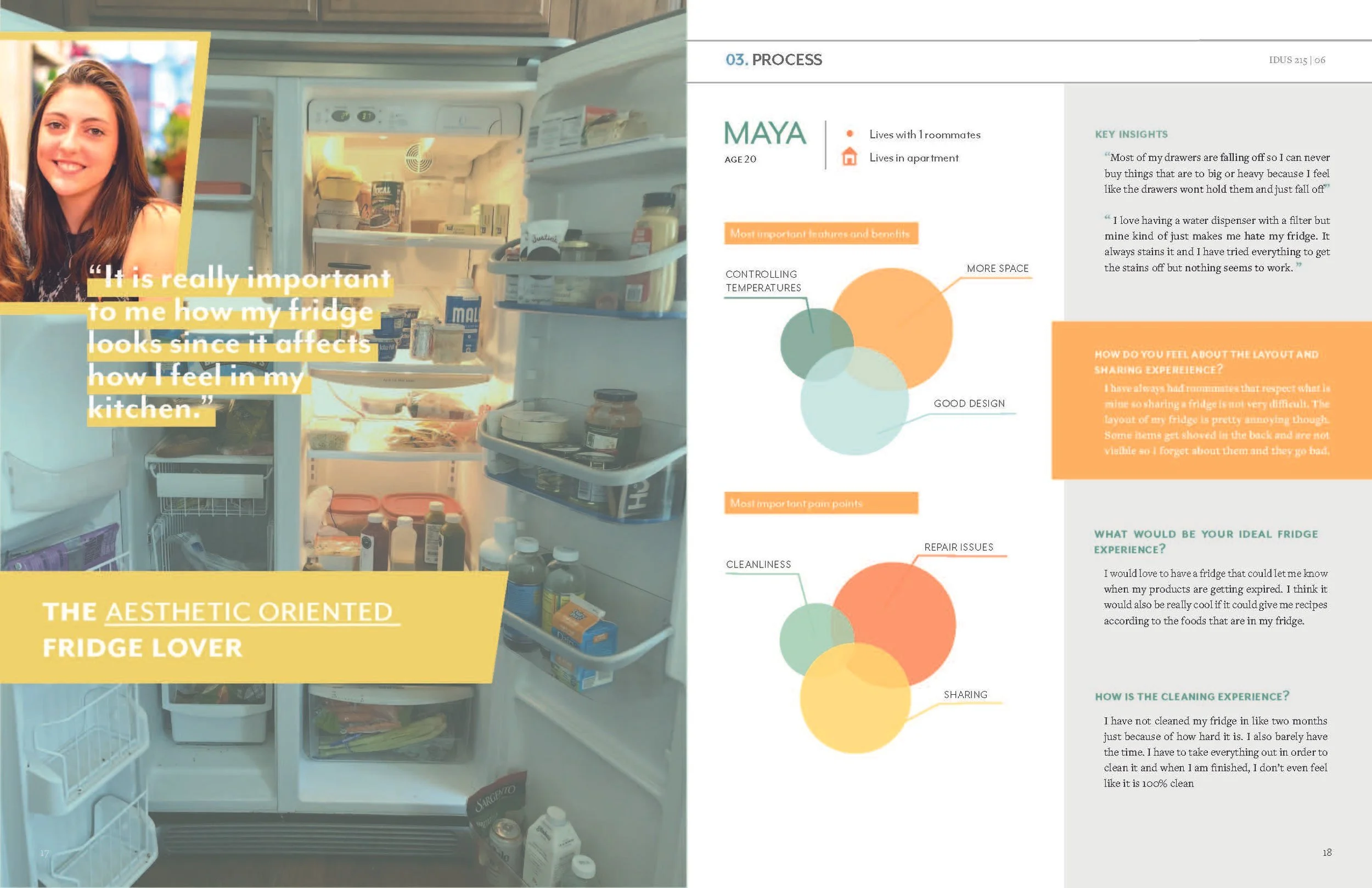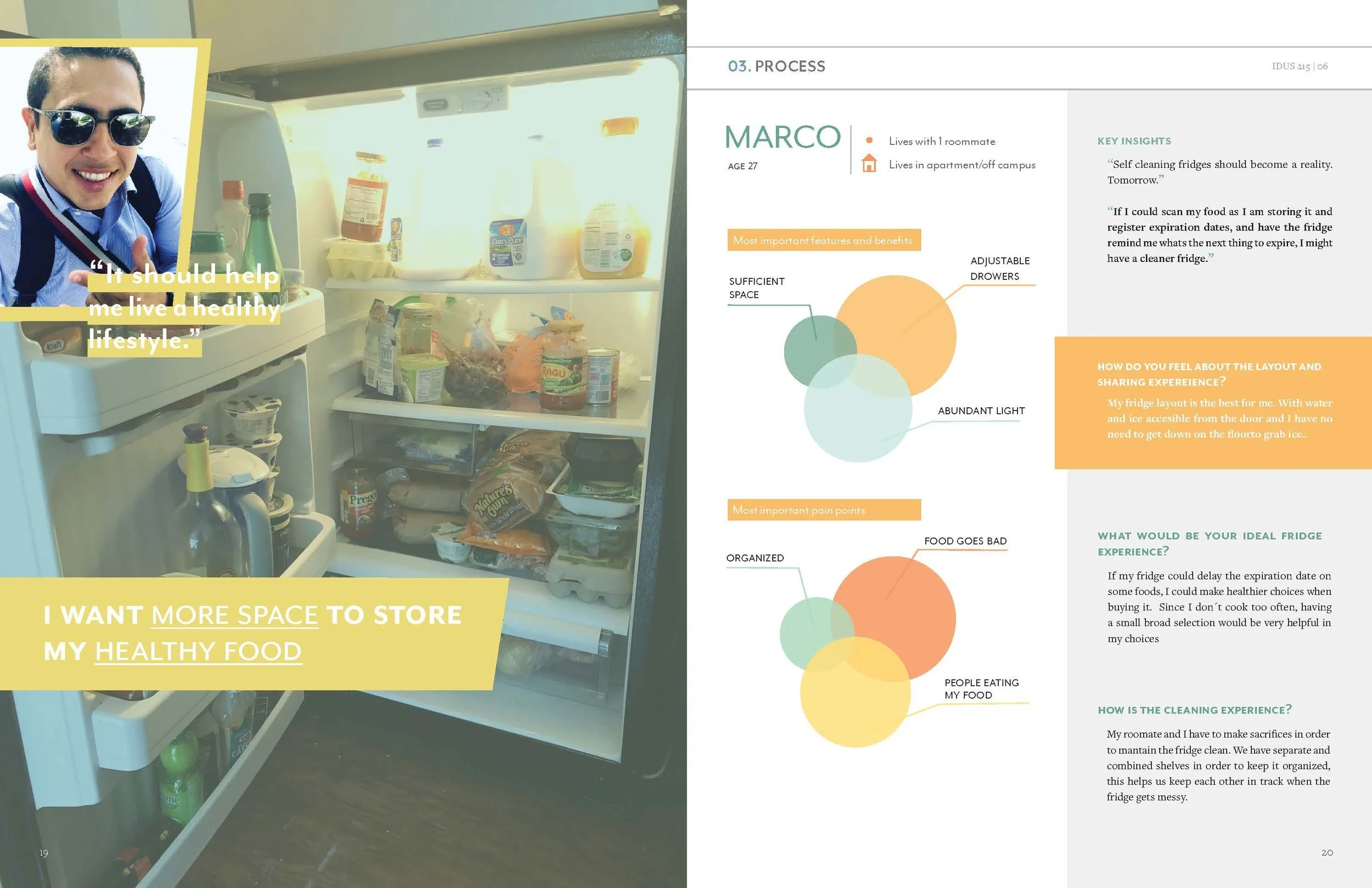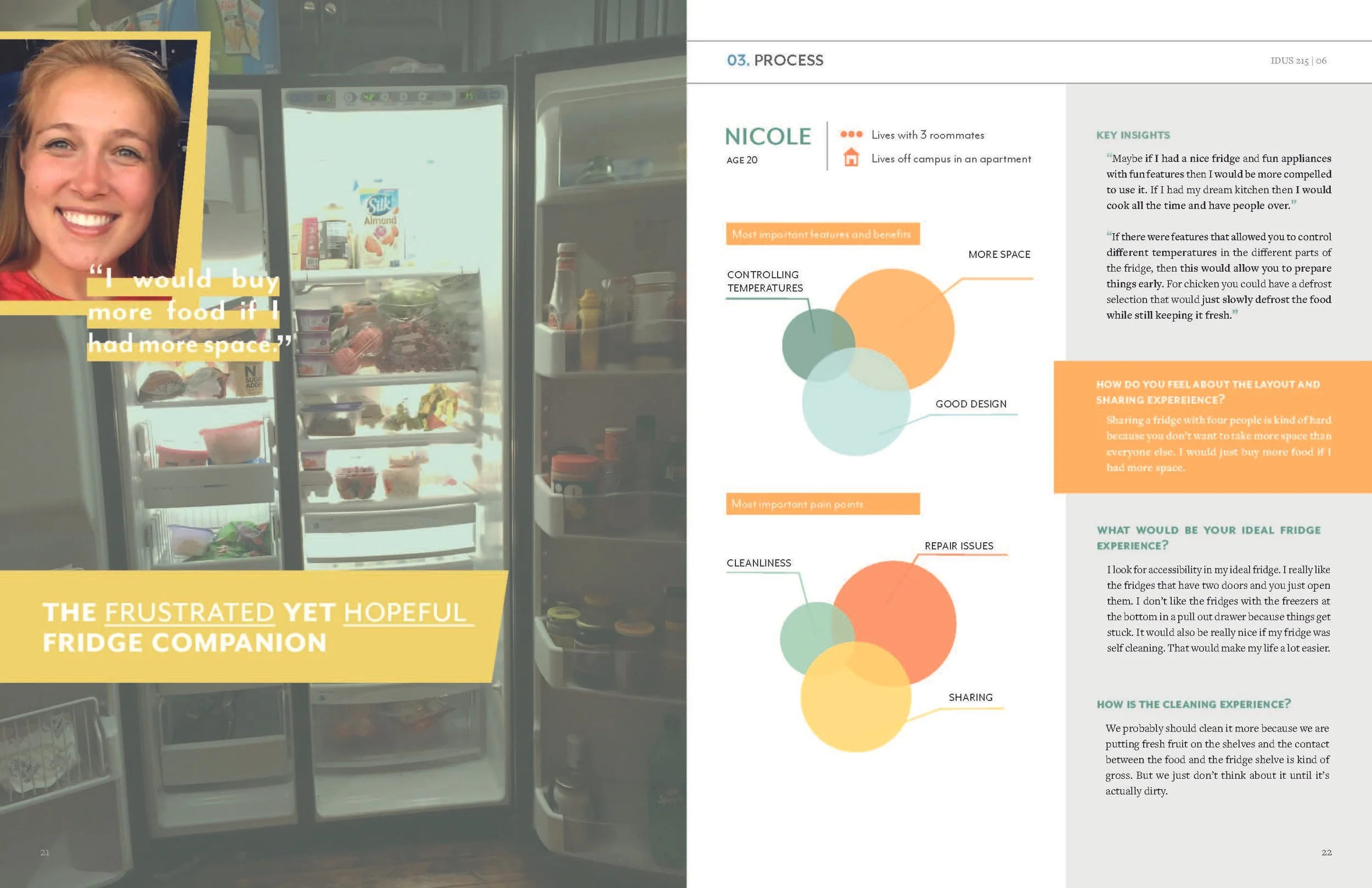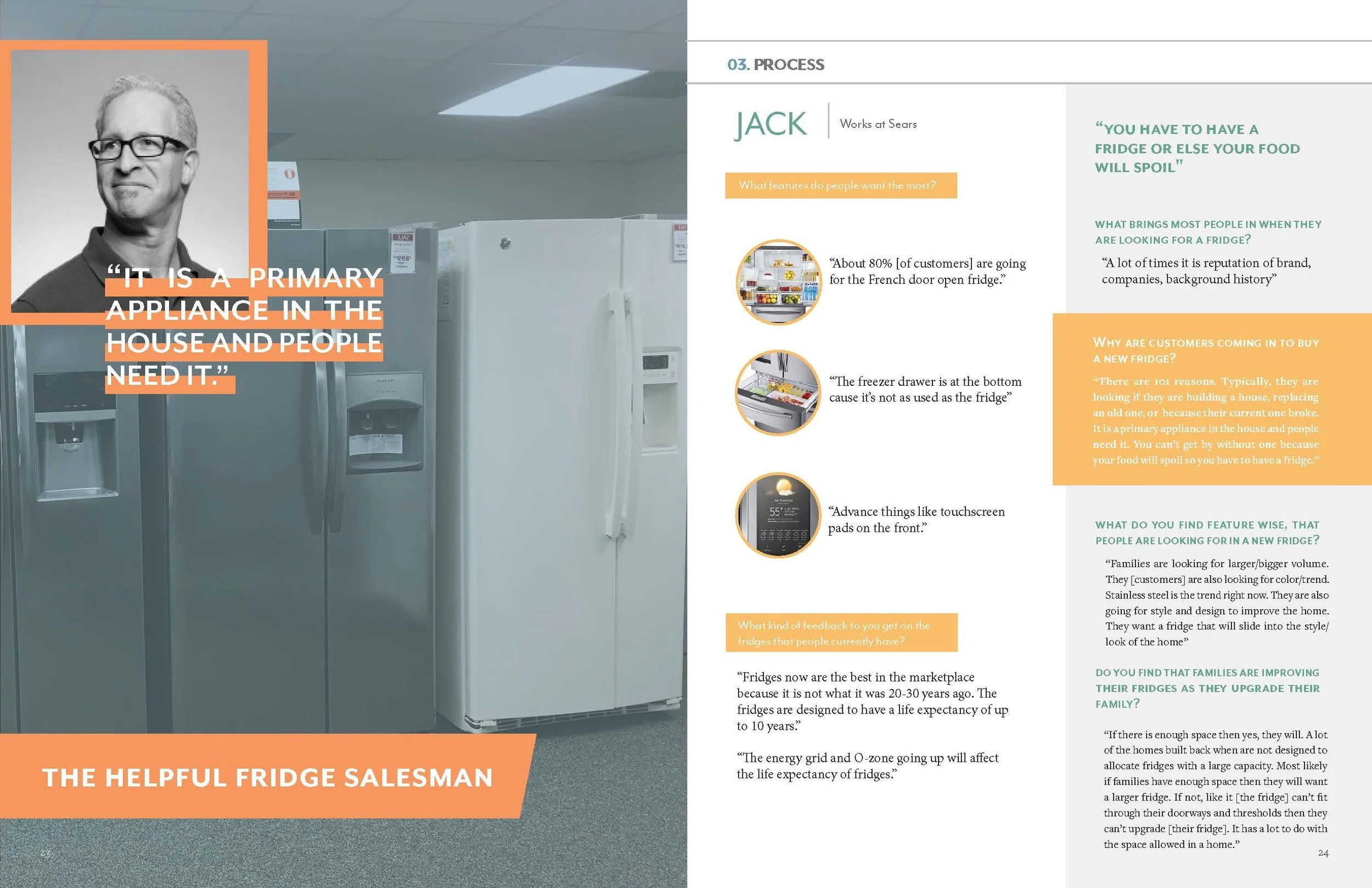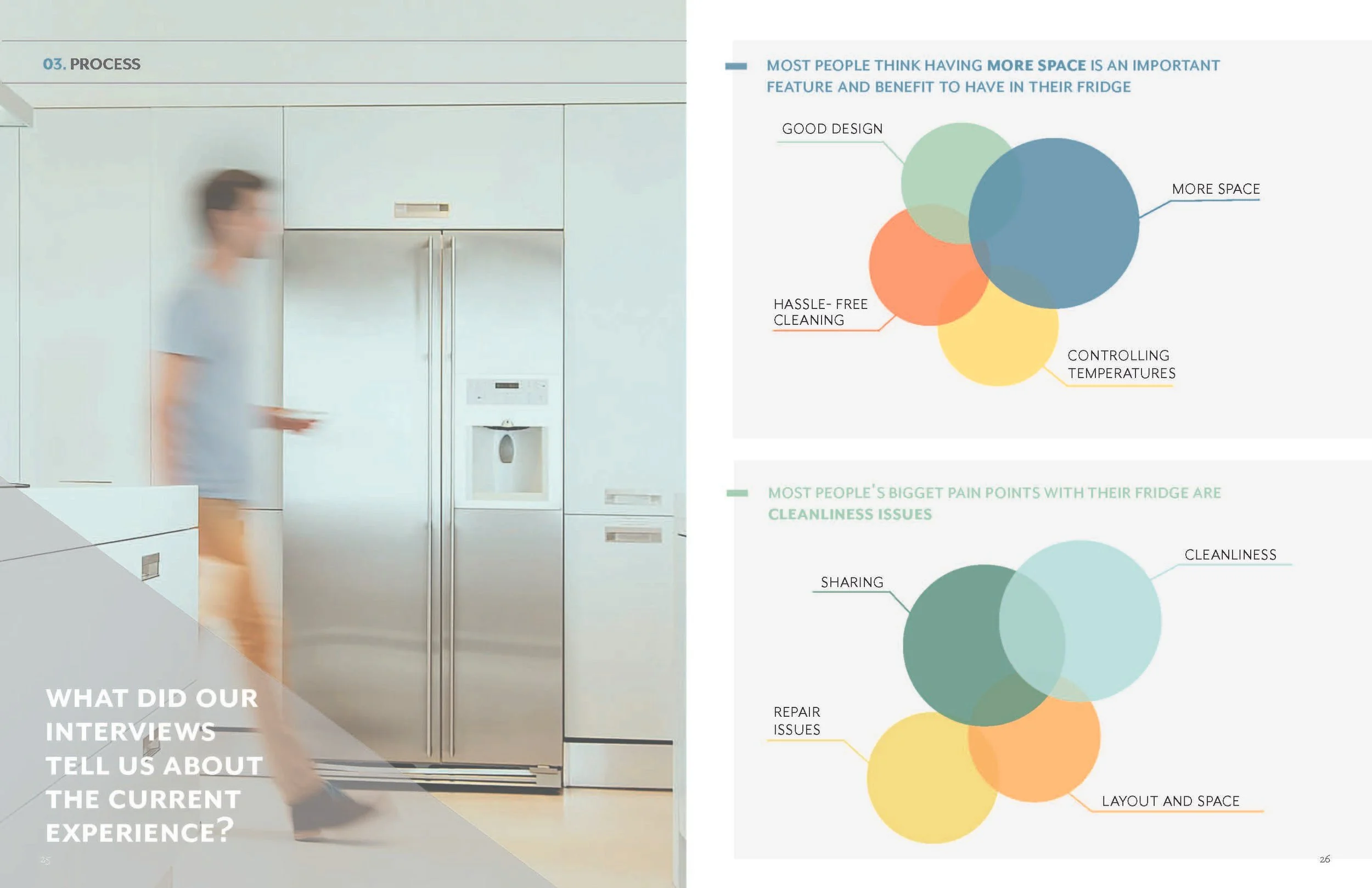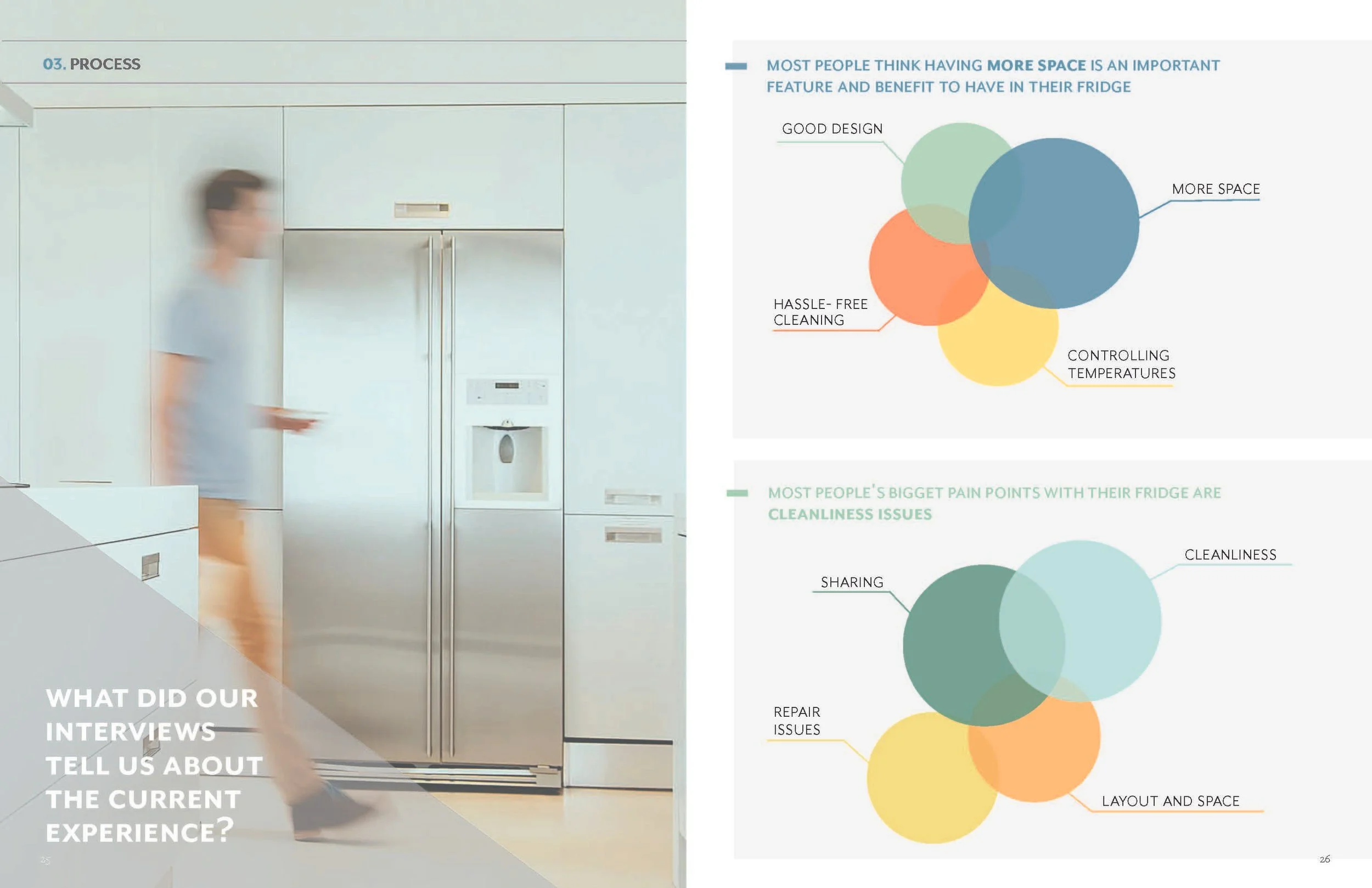True Food
The project's objective was to address a people-centric challenge by devising tailored innovative solutions. Assigned as contextual researchers, our role was to examine the optimal fridge usage and sharing experience. We adopted a human-centered approach, conducting interviews, probes, and observations to comprehend individuals' interactions with their food storage practices.
The proposed design solution, an app named 'true food,' not only enhances fridge visibility but also streamlines the entire grocery-to-fridge process. Rooted in the grocery shopping experience, food sharing, and healthier eating habits, this app empowers users to take advantage of natural products. It simplifies the process by allowing users to capture grocery receipts, automatically logging data into the 'my fridge' section of the app.
Student Project: 2018
Credits: Peter Lough, Juanita Pastrana Acosta, Sofia Baussan, Daniela Benitez
Role: Lead Graphic Designer | Responsibilities: design research, prototyping, app wireframes, app page design and execution, ethnographic researcher
Project overview + outcome
Overview: Understand the ideal experience of using and sharing a refrigerator.
Outcome: Generate a design framework for designers to follow as they create innovative and ideal product experiences.
Stages of the project
01 Conduct Ethnographic Research
-
Qualitative research involves exploring and understanding the depth and nuances of human experiences, behaviors, and perceptions through methods such as interviews, observations, and analysis of textual or visual data.
-
Quantitative research involves collecting and analyzing numerical data to identify patterns, correlations, and trends in order to draw objective conclusions and make statistical inferences.
-
A sensory cue kit for is a curated collection of tangible elements that stimulate the senses and evoke specific emotions or perceptions to gather insights and enhance user experiences.
-
Affinity diagramming in service design is a method of organizing and categorizing diverse ideas, observations, and insights gathered from stakeholders to uncover patterns, themes, and relationships, facilitating the identification of key issues and opportunities for designing improved services.
02 Present Research Findings
-
Identifying stakeholders is crucial because it helps ensure that the perspectives, needs, and expectations of all relevant parties are considered. This comprehensive understanding allows for the creation of user-centered solutions that address various perspectives, leading to more effective and successful service designs that meet the diverse requirements of both users and the business.
-
A design framework is a structured approach or set of guidelines that provides a systematic method for solving design problems. It offers a foundation for making design decisions, organizing processes, and achieving consistent outcomes by outlining principles, processes, and tools that guide designers in creating effective solutions.
-
The Design Research Magazine serves as a platform to narrate the discovered research insights and instruct designers in crafting impactful design solutions.
03 Create a Design Solution
-
Develop a design solution that addresses user needs, leveraging research findings to enhance the experience of using and sharing a refrigerator.
01 Conduct Ethnographic Research
Qualitative Research
Observations were conducted in appliance stores, homes of fridge users, and at grocery stores. Our team conducted 14 interviews with a diverse group of people.
Quantitative Research
Creating a Cultural Probe to Collect Quantitative Research
We received 80 responses to aid to our statistical research. With the probe we had a survey of 7 questions that added value to our understanding of fridge users.
Food shaped survey sheets were used to capture cultural probe participants responses. If a participant felt they ate at home more often they would take a fruit shaped survey sheet. If they felt they dined out more often they would take a fast food shaped survey sheet. My goal in making the surveys was to create a playful and inviting questionnaire, thus the use of emojis and color full design.
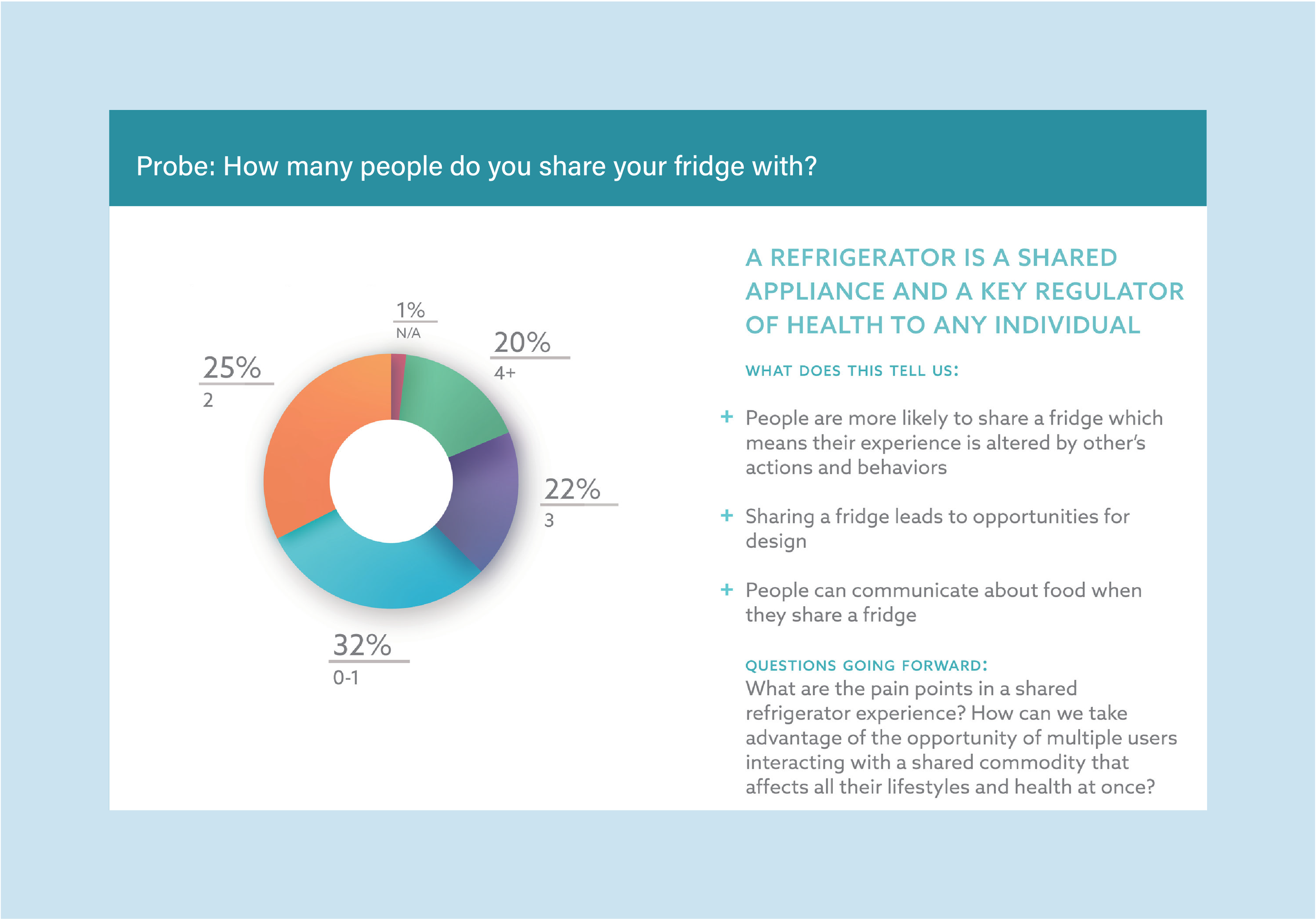
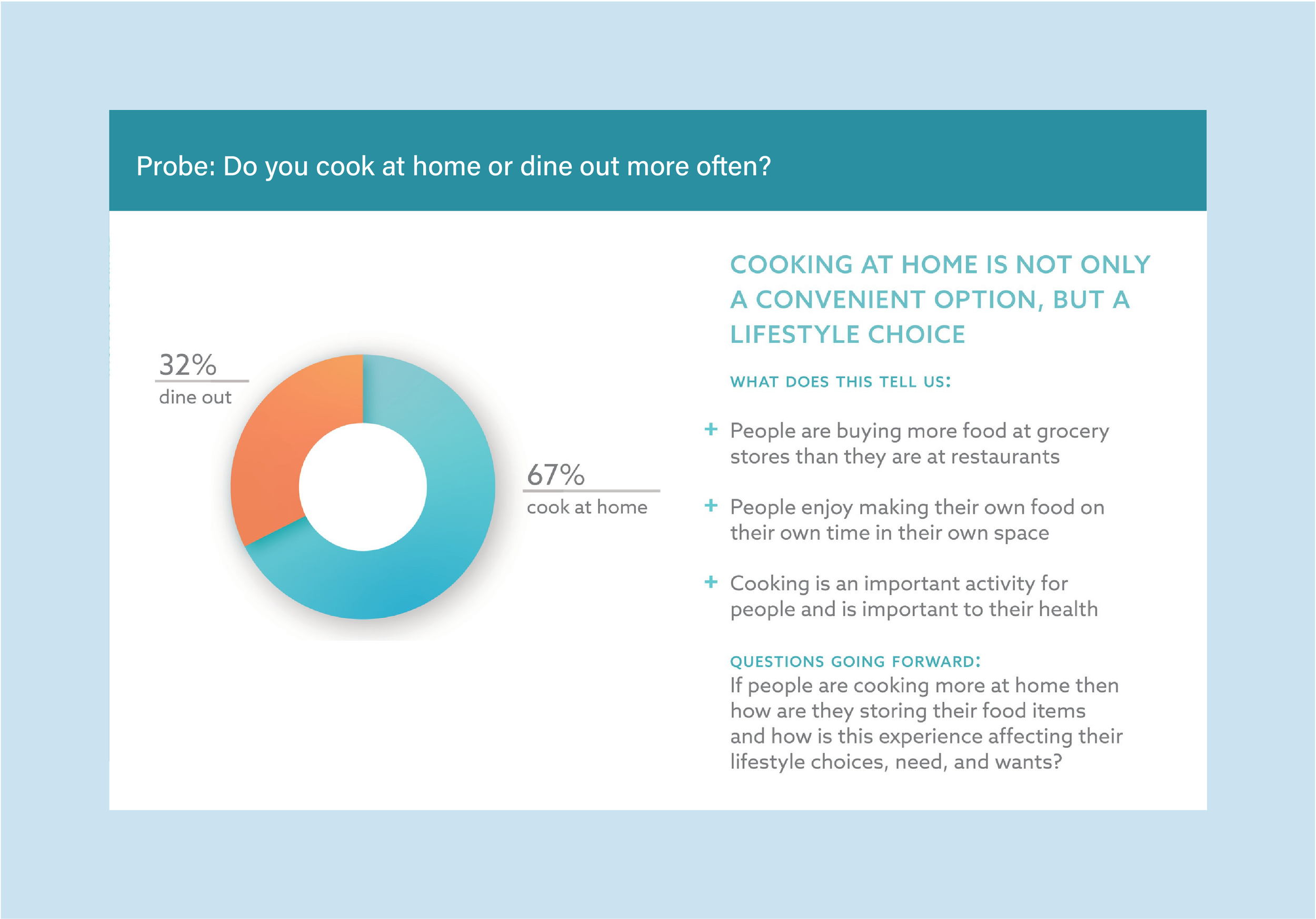
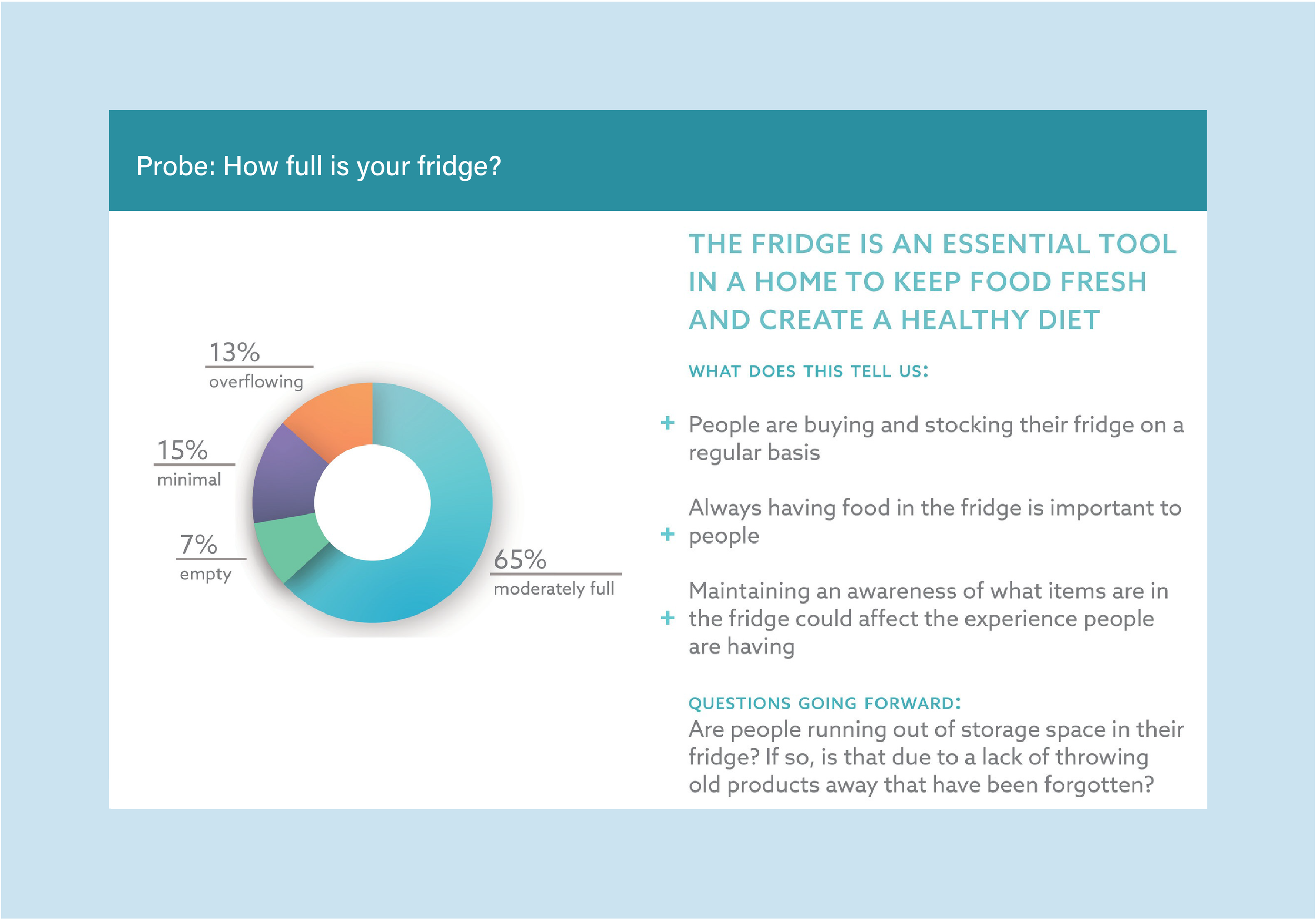
Sensory Cue Kit
A sensory cue kit aims to distill the essence of an experience into a single word. This non-objective kit employs visuals to guide participants, with each visual representing a specific meaning. These words serve as reference points for participants throughout the research study.
Goals & Criteria:
Acknowledge human senses
Create a diverse kit with plenty of opportunities to facilitate discussion
Prioritize a modular experience that involves touch
The kit should uncover what consumers want out of their product experiences from emotions and benefits down to features and sensory cues
What research insights are we aiming to gain from this study?
How to create the ideal experience with people’s tactile senses in mind
Notice patterns of people picking the same objects
Affinity Diagramming
A process to organize issues and insights across all users together into an open space and recognize patterns between the content.
After about 10 hours and more than 200 sticky notes later we have reached a point of discovery
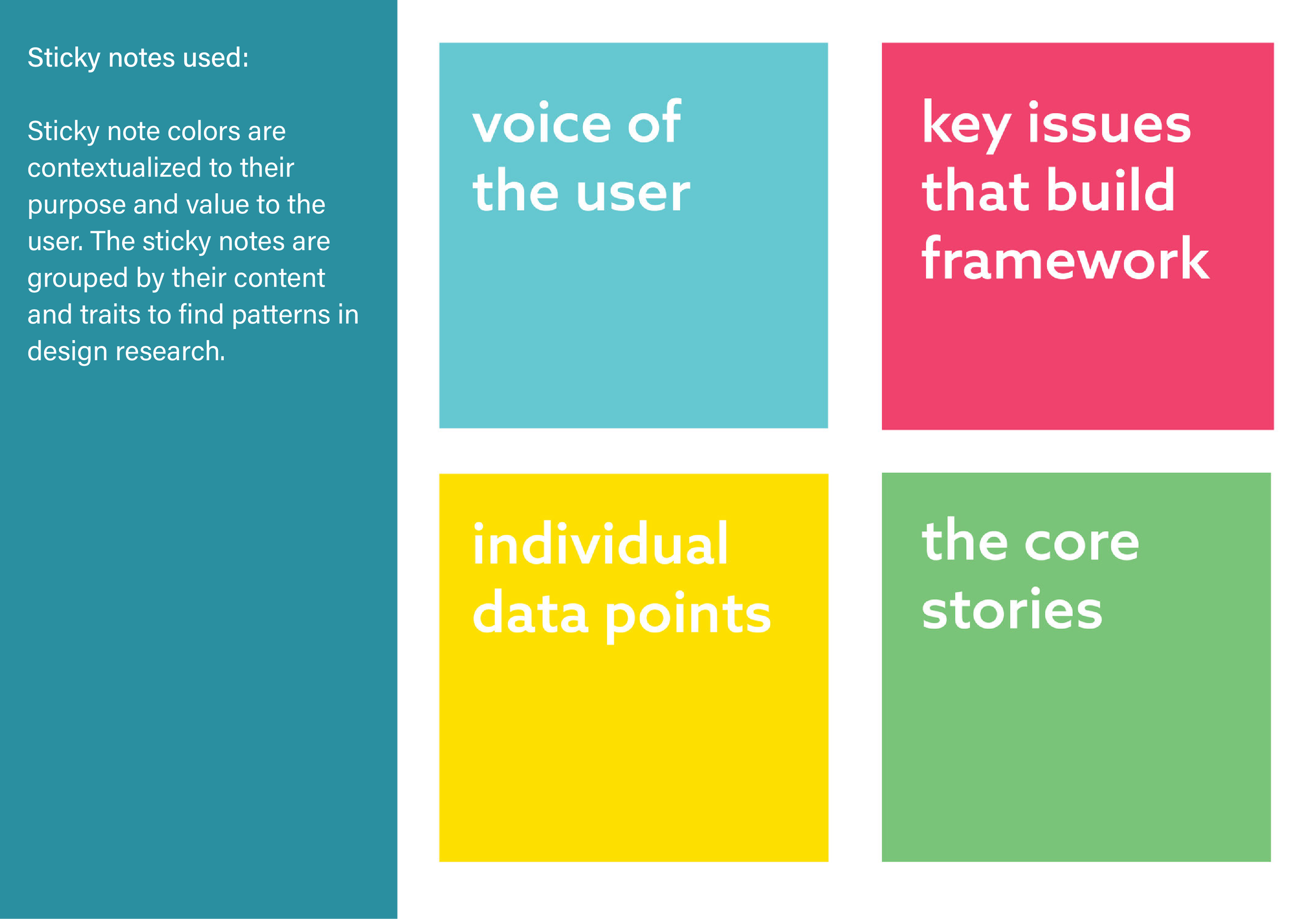
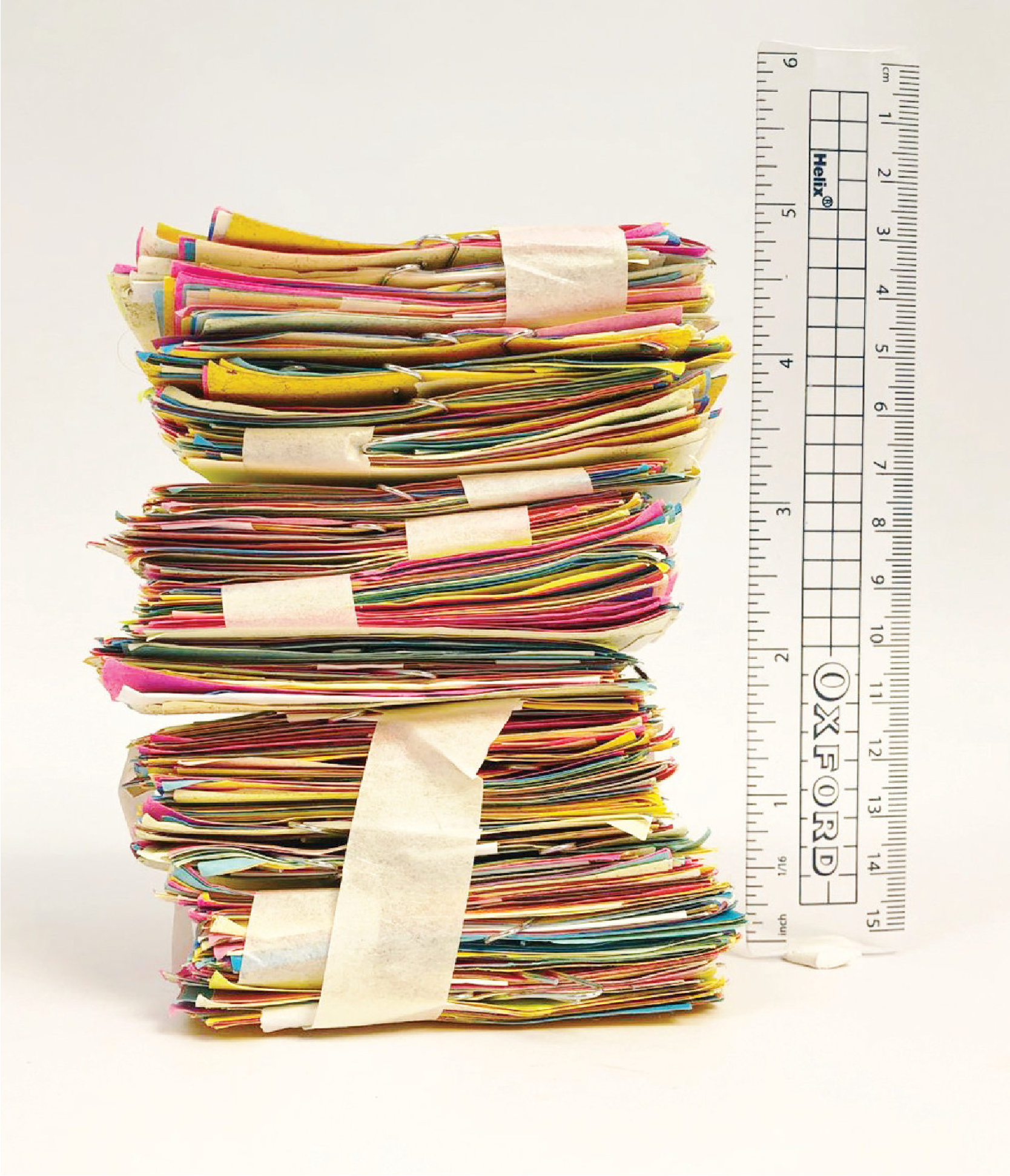
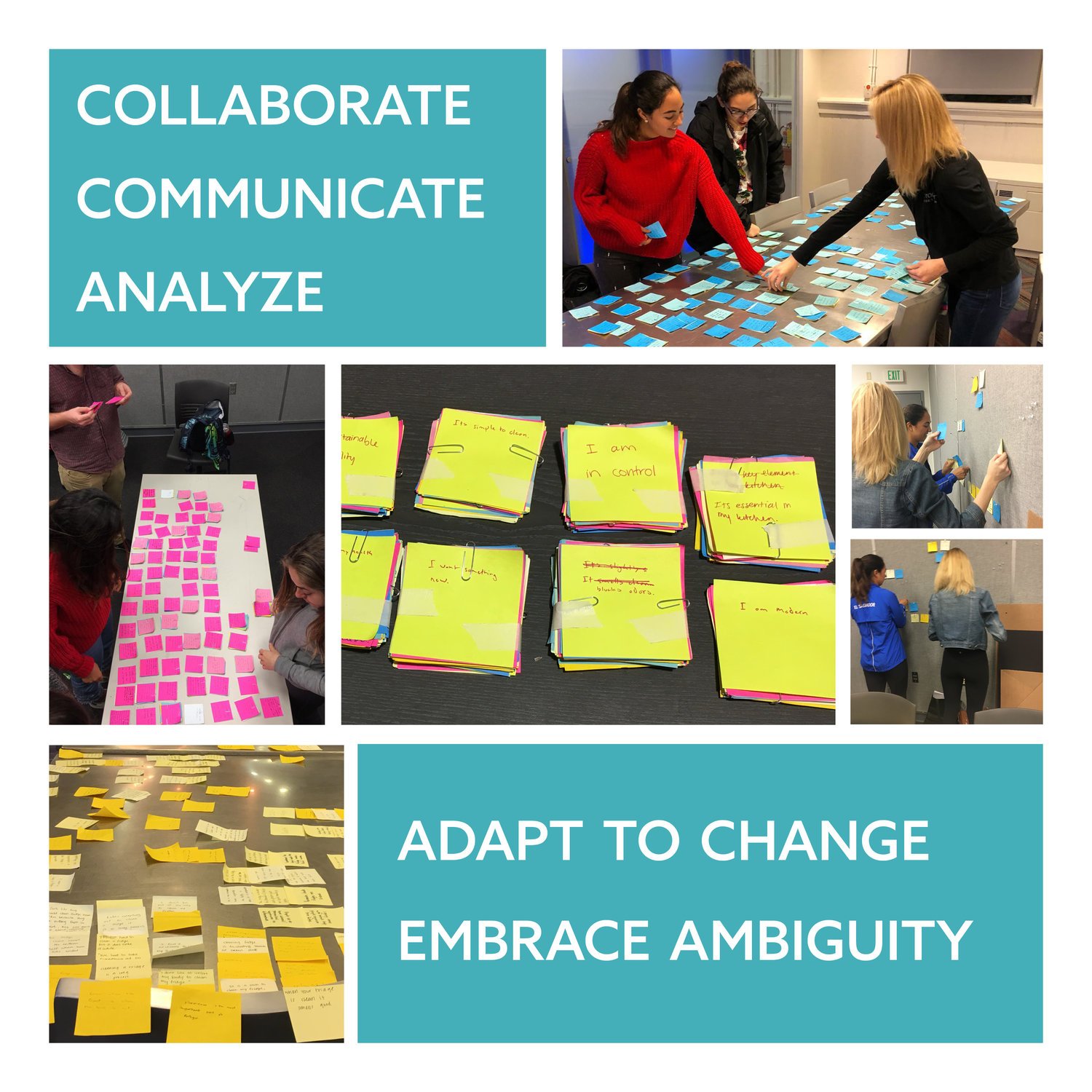
Creating a Design Framework from all the design research studies
02 Present Research Findings
Identify Stakeholders
Who would be interested in our research and how would it be useful for their customers?
After conducting several methods of ethnographic research we discovered that grocery store companies would be most interested in design research about the ideal experience of using and sharing refrigerator. People’s habits with buying food begin with the experience they are having at the grocery store. They continue through the life span of the food items they have bought. The better people feel about their fridge the more the are going to buy at the grocery store.
Design Framework
The framework is a collection of design criteria that we visualize in a model. It comes from research and it should be easy to refer to. The design framework should be actionable meaning everyone wants insights that they can act upon in the present day. The framework should also relate to what users must have, should have, and something that would be nice to have.
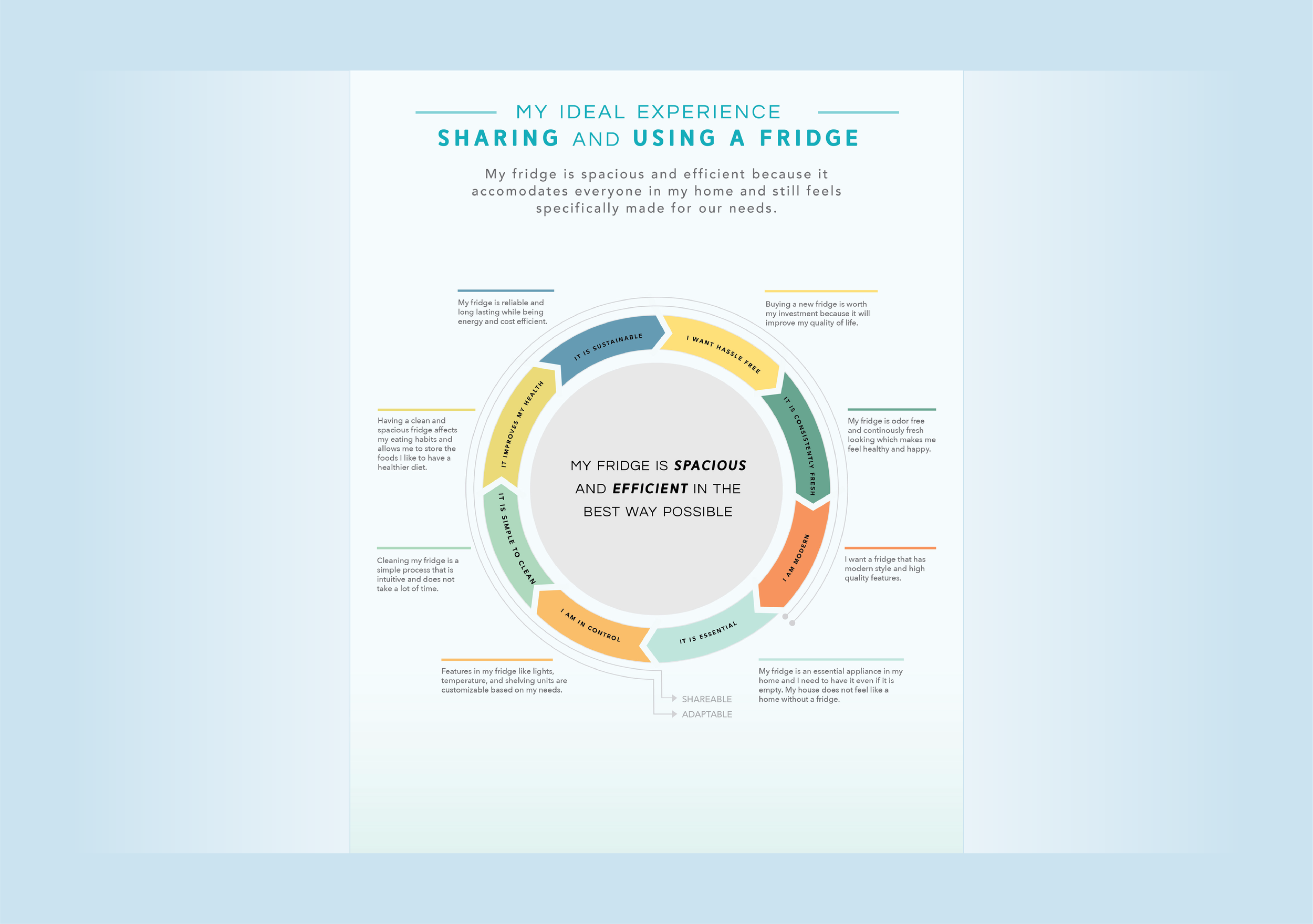
Design Research Magazine
This magazine reveals the studies that were found while conducting contextual research. The information provides an understanding of the user’s current experience and frames ideas to create the ideal experience of sharing and using a refrigerator.
Creating a Design Solution from the design framework.
03 Create a Design Solution
Following the completion of our ethnographic design research, I had an opportunity to delve deeper into the project and devise a design solution to enhance the refrigerator usage and sharing experience. The outcome is an app named TrueFood, designed to provide not only a clear insight into fridge contents but also an intuitive and seamless grocery-to-fridge journey. This solution aligns with the design framework's focus on convenience, necessity, control, and health enhancement aspects.
